






Despite the awful tragedy ofSeptember 11, 2001,anthrax threats to homeland security, Osama bin Laden,the down turn in the economy,Enron,WorldCom,and ImClone,it is nice to be in the position ofreporting some very positive news:the School had a remarkably successful year. We did exceptionally well in the State budget signed into law by the Governor in late June,ending up with an appropriation that was 5% above the amount appropriated in July 2001.Few other institutions ofhigher learning in the State were so blessed and I thank the Governor and General Assembly for their support and wonderful recognition ofthe importance ofthe School to Pennsylvania, especially to Pennsylvania agriculture.Now,we must do all we can to fulfill the expectations that accompany the State’s support;this includes advancing our programs in Global Information System mapping ofthe livestock and poultry industries in the Commonwealth, food safety,biosecurity,infectious disease research,and public health.
The School was also successful with its application for capital support from the National Center for Research Resources at NIH and has been awarded nearly $2 million towards the cost ofthe vivarium in the new Teaching and Research building.As a result of this infusion offunds,the School now has $39,850,000 in gifts and pledges towards the $48 million cost ofthe Teaching and Research Building;this is outstanding.It reaches a milestone that has gained the President’s and Provost’s approval to start the process ofselecting an architect and commencing schematic design.This seems to me to be the fun part of the whole project.It will be orchestrated by a faculty Building Committee chaired by Dr.R. O. Davies.With the architect,the Committee must now come up with a design that is both functional and beautiful.
In terms ofour fund-raising,this past year was a banner year.We set another record for
new gifts and pledges with $13.4 million raised by June 30,2002.In cash receipts,we had our second best year ever at $8.1 million.We were especially fortunate to attract significant new support for the Teaching and Research Building,securing $7.5 million in new commitments from individuals and private foundations.I am also very pleased to share with you that we raised more than $1 million in new current use and endowed scholarship support and thank the many donors who made these generous contributions to the School.
We were blessed with a beautiful day on June 29th for the dedication ofthe Scott Equine Sports Medicine Building at New Bolton Center.This is a magnificent addition ofwhich our benefactors,the late Almira and Hardie Scott,would be proud.The building also holds some ofthe most distinguished names in horse racing and we are grateful for their great generosity to the School.In the evening,the School celebrated the 50th anniversary ofNew Bolton Center with a dinner followed by an excellent new video, On Any Given Day,that depicts “a day in the life ofNew Bolton Center.”
At the close ofthe evening I was very happy to have Betty Moran join me to make the announcement that Dr.Virginia Reefhas been appointed to a newly endowed chair,The Lila Griswold and Mark Whittier Allam Chair in Medicine at New Bolton Center.Some 20 years ago,Betty gave the School funds that were invested and grew.Now they permit us to establish the new Chair.The appointment is especially fitting for Ginny is a world renowned equine cardiologist and Betty Moran has had an abiding interest in the topic,giving the funds to establish not only the original heart station in 1963,but the cardiology suite in the Moran Family Wing ofthe new Scott Building.
In research,the School also had an outstanding year.To mention a few ofthe faculty’s many accomplishments:Dr.Ralph Brinster’s work on male germ cell transplantation was reviewed in June in Science and was featured on the cover ofthis edition.Dr.Hans Scholer’s work published in Genes and Development, showing why cloning in animals is so unpredictable received world wide publicity,as did Dr.Ina Dobrinski’s recent paper in Nature on growing testicular tissue from pigs and goats on the back ofimmuno-compromised mice. Drs.James Lok and Edward Pearce received a
$3 million grant from the Ellison Foundation for studying gene manipulation in nematode parasites,and Dr.Narayan Avadhani received a $500,000 grant from NIH to purchase state-ofthe-art equipment for proteomics.
Finally,I am very pleased to share with you that we are at last making progress in revising the curriculum and have started phasing in the revisions this September for the freshman class. The number ofhours students sit in class,passively listening to lectures in the first year is reduced.With the time made available,students have new opportunities for supervised training in the clinics to better understand the relevance ofthe basic sciences to clinical medicine.Changes with similar objectives will be phased into the second and third year curricula as the program evolves
Now we have the challenge ofdoing as well in this new academic year.
Alan M.Kelly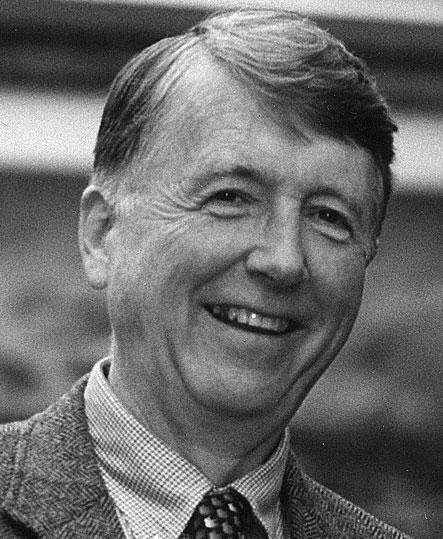 The Gilbert S.Kahn Dean ofVeterinaryMedicine
The Gilbert S.Kahn Dean ofVeterinaryMedicine
The annual Student Chapter ofthe American Veterinary Medical Association (SCAVMA) Auction will be held on Friday, December 6,2002 in the E.R.Marookian, V.M.D.Auditorium at the Veterinary Hospital ofthe University ofPennsylvania. The event begins with a silent auction at 3:00 p.m.,followed by the live auction at 5:00 p.m.Everyone is invited to support the auction!
The annual SCAVMA auction is a popular event for the entire School community.Proceeds from the silent auction help to fund student travel expenses to the annual National Student AVMA Symposium. Proceeds from the live auction help to fund SCAVMA events and the new SCAVMA Scholarship Program.
The mission ofSCAVMA is to increase the quality ofveterinary student life through educational,social and cultural extracurricular activities.For more information on the auction or to donate auction items,contact Ian J.Driben,V’05,Auction Co-Chairperson,via e-mail at <driben@mail.vet.upenn.edu>.

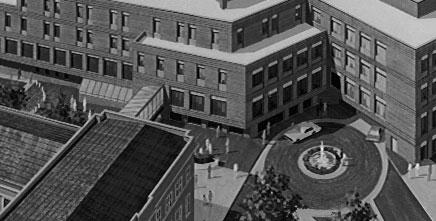
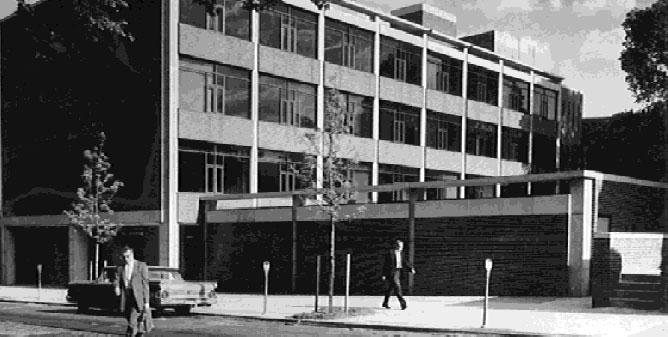

Since the last time we reported on the funds for the Teaching and Research Building, we have raised $4.75 million for a total of $39,850,000.
Some gifts ofnote include at least $1.75 million from the National Center for Research Resources at NIH. The National Center for Research Resources (NCRR) was established in 1990 to advance biomedical research and improve human health through research projects and shared resources that create,develop,and provide a comprehensive range ofhuman,animal,technological,and other resources.NCRR's support is concentrated in four areas:biomedical technology,clinical research,comparative medicine,and research infrastructure.
Mrs.Patricia Billhardt contributed an additional gift of$250,000 for support ofthe 150-seat classroom that will bear her name.Pat Billhardt serves
on the School’s Board ofOverseers and has always been very supportive of our students.She established the Mrs. Jack L.Billhardt Dean’s Scholarship fund which supports several students each year.
John D.McCullough,V’43 and his wife,Dorothy,contributed $150,000 to name a public space in the new building.Dr.McCullough is one ofthe School’s most generous alumni and has supported the McCullough Research Fund at New Bolton Center.
Ms.Beverly R.Steinman contributed $100,000 through the James Hale Steinman Foundation for general support ofthe building.Ms.Steinman is a client at VHUP and is a generous supporter ofthe School’s activities each August at Saratoga,N.Y.
The dean has appointed a faculty building committee and the University has begun the process ofselecting an architect.
$48 million goal

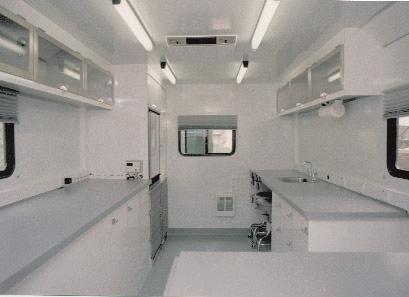
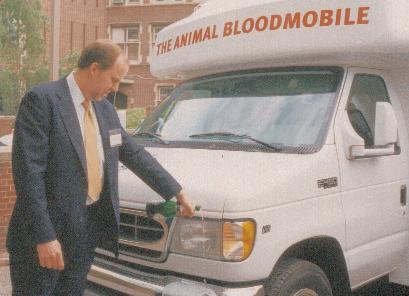
The new Animal Bloodmobile was unveiled at VHUP on May 7.It was made possible by a generous gift from the Wurster Family Foundation.Bogie,a Labrador retriever owned by members ofthe Wurster family,was a VHUP patient whose life was saved by numerous blood transfusions.

The new vehicle is impressive with a length of24 ft.,a width of8 ft.4 inches and a weight of7 tons.The Animal Bloodmobile,custombuilt to the specifications ofthe Penn Animal Blood Bank team,consists ofa Ford chassis with a V-10 engine and a custom-built body. The vehicle is equipped with a hydraulic exam table,a scale,a holding cage,sink and ample counter space for equipment.There are seats for three people.The new vehicle has storage space,including a compartment accessible from the exterior for dog food that is given to the donor’s owners.
The new bloodmobile will be used for blood drives organized by breeders,dog clubs and veterinarians in the Delaware Valley.These drives are held two or three times a week. Blood is collected from 10 to 15 dogs that are brought by their owners.The donation takes just a few minutes and the dogs don’t mind the collection.They are rewarded with a treat ofmeaty dog food and lots ofpats on the head.The blood is brought back to VHUP where it is processed and separated into its components such as red blood cells,plasma and clotting factors.One unit ofblood helps more than one patient.The blood and blood products are typed and matched to ensure compatibility between donor and patient.
VHUP’s blood donor program has the motto “Pets Helping Pets”and began in 1987 to meet the need ofthe hospital’s critically ill patients.The Penn Animal Blood Bank has grown tremendously over the years;since its beginning more than 3,000 dogs have participated.Currently close to 1,000 dogs from the Delaware Valley are active donors.It is the largest voluntary canine blood donor program in the nation.The bloodmobile is a vital part ofthe hospital’s lifesaving treatments for patients.Each day,more than 10 blood transfusions are administered to VHUP’s patients.
To donate blood,a dog must be goodtempered,at least one year ofage,weigh at least 50 lbs.,be in excellent health and have current vaccination status.Those interested in having their dog donate blood should contact the Penn Animal Blood Bank at 215-573-7222.
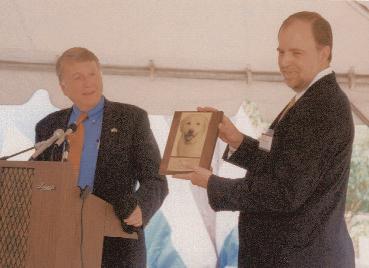
Dr.Virginia Reef has been appointed the Mark Whittier and Lila Griswold Allam Professor ofEquine Medicine at the School.“I am very pleased to make this announcement for Dr.Reefis a distinguished member ofour faculty and one ofthe most accomplished equine cardiologists in the world,”said Dean Alan Kelly.“The new chair was made possible through Betty Moran’s generous investment in the School many years ago.It is the third endowed chair to go to a woman at the School.”
Dr.Reefjoined
Penn’s New Bolton Center in 1979 as an intern in large animal medicine and surgery after graduating from the College ofVeterinary Medicine at The Ohio State University.
Following her internship and a residency in large animal medicine,she joined the faculty as a lecturer in medicine in 1982.She was appointed assistant professor in 1986,associate professor in 1990 and full professor in 1996.
Dr.Reefwas appointed to her current position as director oflarge animal cardiology in 1981. In 1995,she was appointed chief,Section ofSports Medicine and Imaging at New Bolton Center,and she is an executive board member ofthe Allam Center for Equine Sports Medicine at the School.
The Mark Whittier and Lila Griswold Allam Professorship in Equine Medicine is the 19th endowed professorship at the School.

The teaching awards at the School ofVeterinary Medicine are always presented during the annual Student Government Dinner Dance.This year the Franklin Institute was the venue and 250 students,faculty,and staffcame to celebrate the Veterinary Medical Student Government Teaching Awards and awards given by the dean.
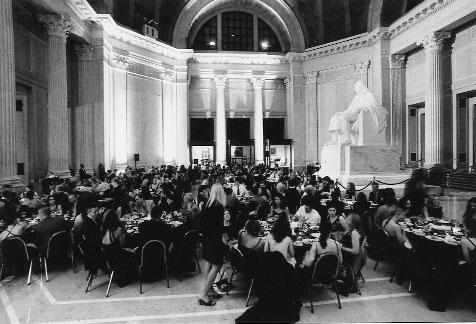
Dean Alan M.Kelly presented the Dean’s Award for Leadership in Basic Sciences to Dr. Ronald Harty, assistant professor ofmicrobiology.The Dean’s Award for Leadership in Clinical Science was presented to Dr.Amy Kapatkin, assistant professor of surgery.These two awards honor one faculty member each from the clinical departments and the basic science departments who have made outstanding contributions to the teaching their disciplines.
Dr.Kenneth Dobratz, associate professor ofcritical care medicine,received the Carl J.Norden Distinguished Teacher Award established in 1963 “to recognize outstanding teachers who,through their ability,dedication, character and leadership,contribute significantly to the advancement ofthe profession.”
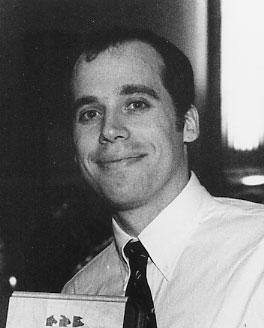
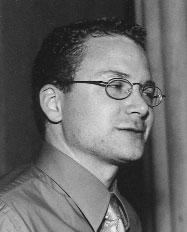

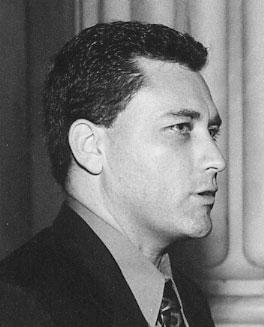
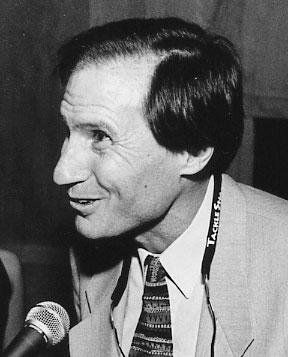
Corinne Sweeney, professor ofmedicine,and Dr.Amy Kapatkin.The Class of2003 honored Dr.Patricia Sertich,V’83, associate professor of reproduction. Dr. Wilfried Weber, professor ofpathology,received the Class of2004 Award.The Class of2005 presented its award to Dr.Robert Washabau,V’82, associate professor of medicine.
Dr.Sweeney was also presented with the Veterinary Medical Alumni Society Excellence in
Teaching Award.This annual award is based on the recommendations ofrecent graduates and is funded by VMAS.
The VHUP Interns Award was presented to Dr.Steven Cole,resident in critical care-emergency medicine; Dr.Mary Beth Callan,V’88, assistant professor in medicine,received the Resident Award;the VHUP Jules and Lucy Silver Award was presented to
Veterinary Medical Student Government Awards were presented to Jane Cohen (VHUP) and Jennifer Dunleavy (NBC).
The Senior Class (V’02) honored the following with the Senior Class Awards:
Resident: Dr.Anne Desrochers (NBC) and Dr.Matthew Nicholson (VHUP)
Intern: Dr.Heidi Phillips,V’01 (NBC) and Dr.Daniel Hume (VHUP)
Technician: Roxanne Bachman (VHUP) and Emily Zug (NBC)
Faculty: Dr.Corinne


Sweeney (NBC) and Dr.Amy Kapatkin (VHUP) Boucher Award: Dr.Corrina Snook,V’99 (NBC)

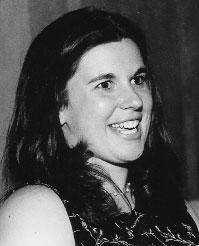

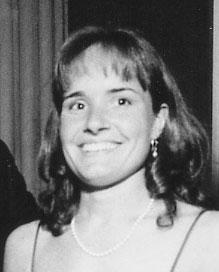
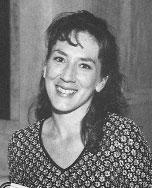
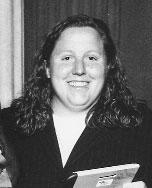
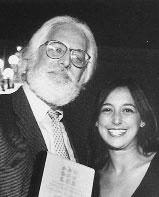
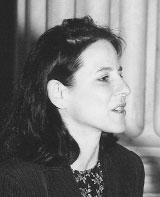

The four classes honored the faculty members they considered to be outstanding teachers.
The Class of2002 presented awards to Dr.
Dr.Jean Ferreri,resident in medicine.The Harcum College Veterinary Technician Award was presented to Eileen Rule (NBC) and Donna Sisak (VHUP). Heidi Graver and Nancy Skinner,both ofNew Bolton Center,received the Gretchen Swartz Award.
The Senior Student Patient Care Award was presented to Steven Gross (NBC) and AmyLynn Parkman and Nancy Soares (VHUP).

The Scott Equine Sports Medicine Building was dedicated on a bright and sunny Saturday, June 29,at New Bolton Center. University President Judith Rodin cut the ribbon, officially opening the new building.
This important addition to New Bolton Center is located next to the Jeffords Treadmill and together these two buildings form the physical core ofthe Allam Center for Equine Sports Medicine,the equine sports medicine service,teaching,and research section at New Bolton Center.It is a timely response to the Center’s increasing case load generated by advances in equine veterinary imaging and ultrasound technology.Sport horses from all disciplines ofequine competition (racing,show jumping,eventing,dressage,etc.) comprise the bulk ofthe Center’s patients.
The Scott Building,named in honor ofthe late Almira and Hardie Scott,houses the Section of Cardiology and Imagingunder the direction of Dr.Virginia Reef,who has built a world wide reputation for excellence in this field.Here clinical patients are examined and sophisticated ultrasound imaging techniques are used,often in conjunction with a treadmill work-up.
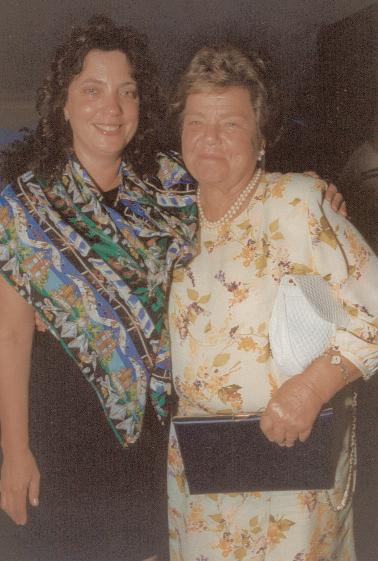
In the research wing,the physiology laboratory is used by Dr.Eric Birks to expand his work on exercise physiology ofthe equine athlete and his studies ofequine pulmonary
hemorrhage.
The Scott Building was made possible through the generosity,loyalty and vision of many individuals and foundations who recognized the need for the building and
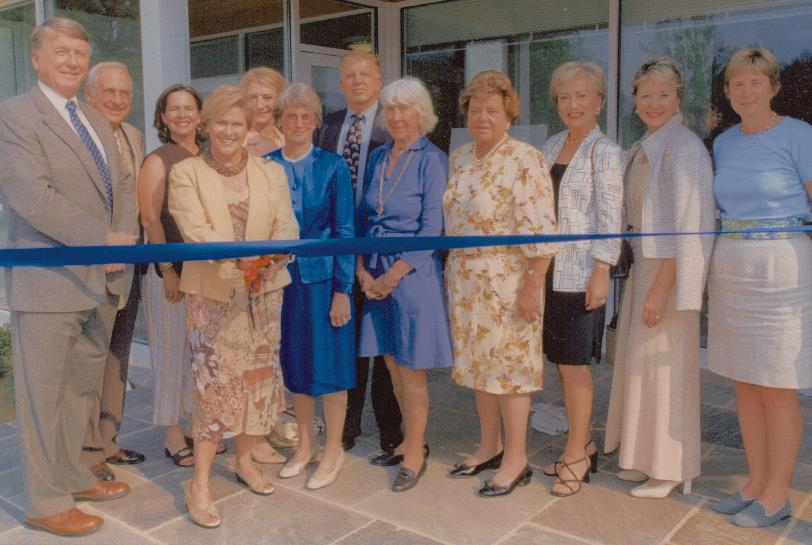
responded enthusiastically.
The Scott Building is still being equipped with state-of-the-art diagnostic equipment and clinicians welcomed their first patients in early July.
Major Donors to the Scott Equine Sports Medicine Building
American Gold Cup
Estate ofLouise B.Barclay
Archie W.& Grace Berry Foundation
Mrs.Sarah R.Bogdanovitch
Mr.and Mrs.Michael J.Burke
Chichester duPont Foundation
Carol Dolinskas,M.D.
Ms.Viola Ellison
Evening in Old Saratoga
Mrs.Henrietta George
Hanover Shoe Farms Foundation,Inc.
Hilltop Farm – ISR Inspection
Iron Spring Farm – c/o Ms.Mary Alice
Malone/(Romer Foundation)
Mr.and Mrs.M.Roy Jackson
The Clara Jeffery Trust
Mr.and Mrs.William C.Lickle
Mrs.Jane duPont Lunger
Mrs.Jane MacElree
Mr.C.Taylor Marshall
Mr.and Mrs.Ellice McDonald
Mr.and Mrs.Herbert I.Moelis
Mrs.J.Maxwell Moran
Elizabeth R.Moran Charitable Trust
Mr.and Mrs.James M.Moran,Jr.
Estate ofRuth E.Moredock
Mrs.Henry D.Paxson
Mrs.Mary G.Rockefeller
Estate ofAlmira R.Scott
Mr.Bayard Sharp
Thomas & Nephele Wing Domencich Foundation,Inc.
Mrs.Jean P.Tilt
Thoroughbred Retirement Foundation
Auction Account
Thoroughbred Charities ofAmerica
Estate ofGustav Veirman
Mr.and Mrs.William Wright
Major Donors to Equipment for the Scott Equine Sports Medicine Building
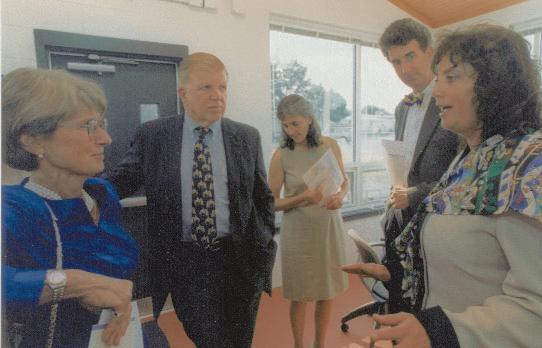
American Gold Cup
Mrs.Sarah R.Bogdanovitch
Chichester duPont Foundation
Clara Jeffrey Trust
Iron Spring Farm – c/o Mary Alice
Malone/Reomer Foundation
Mr.and Mrs.M.Roy Jackson
Ms.Kathryn H.Johnston
Mr.and Mrs.Caesar P.Kimmel
Elizabeth R.Moran Charitable Trust
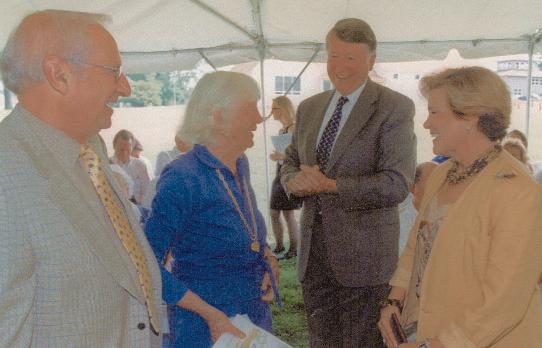
Mrs.Mary G.Rockefeller

Scott Annuity
Thoroughbred Charities ofAmerica
Three Chimneys Farm
2001 Saratoga Day at the Races

Dr.Cynthia Otto, associate professor ofcritical care medicine,was named “Veterinarian of the Year”by the Pennsylvania Veterinary Medical Association at the annual meeting in August at Hershey.Dr.Otto presented the Dr. Palace H.Seitz Memorial Lecture at the event.
Marsha Finkelman,bio-medical purchasing manager at VHUP,will take office as president ofVTAAP (Veterinary Technicians and Assistants Association ofPennsylvania,Inc.) in January,2003.She is also one ofthe organizers ofthe Academy ofVeterinary Technician Anesthetists (AVTA) along with Ellen Lomastro, Wendy Curtis-Uhle, and Larry Nann Ms.Finkelman is a member ofan organizing committee for the 2004 AVMA convention to be held in Philadelphia.
Dr.Andrei Thomas-Tikhonenko, assistant professor ofpathology,received a grant from the National Cancer Institute and National Institute ofAllergy and Infectious Diseases to study the role ofinfection-induced,proinflammatory cytokines in suppression of B-lymphoma growth and neovascularization.
Dr.Helen Aceto,V’97, lecturer in animal health economics,participated in the National Resources Conservation Service’s Eastern Region Technical Workshop –Restoring and Managing the Stream Corridor.She presented a session on biosecurity and human health issues.
& Feline Genomics:Comparative Genome Anatomy and Genetic Disease Meeting St. Louis on “Gene Transfer for Lysosomal Storage Diseases”and at the American Society for Gene Therapy,Boston Plenary Session presented one ofthe five best abstracts:“Neonatal Retroviral Vector-Mediated Gene Therapy for Mucopolysaccharidosis VII in Dogs Results in Stable Hepatocyte Transduction and Marked Improvement in Bone and Joint,Cardiac,and Corneal Manifestations For Up to 14 Months”.
In June he gave the Keynote address at the 7th International Symposium on Mucopolysaccharide and Related Diseases and 3rd Scientific Lysosomal Storage Disorders Congress,Paris, France.It was titled “Animal Models – Advantages and Limitations.”
Dr.Andrew Wood,professor ofveterinary radiology, Dr.Tobias Schwarz,lecturer in radiology, and Dr.Allison Zwingenberger,resident in radiology,attended the 9th Annual Scientific Conference ofthe European Association of Veterinary Diagnostic Imaging held in Murcia,
Dr.Jorge Guerrero,adjunct professor ofparasitology,was appointed to the Executive Board ofthe American Heartworm Society in May. He will be the director in charge oforganizing the Heartworm Symposium of2004 and will be organizing the continuing education programs for the society.He was elected to the Board ofDirectors ofthe Eastern States Veterinary Association and The North American Veterinary Conference.From August 5 to November 2 Dr.Guerrero serves as a visiting professor at the College ofVeterinary Medicine ofthe Universidade Federal Fluminense in Niteroi, Rio de Janeiro,Brazil.
Dr.James Serpell,Marie A.Moore Associate Professor ofHumane Ethics and Animal Welfare,won an international competition for the best paper in Animal Studies with his essay “Beyond the Cute Response:Anthropomorphism and Anthropomorphic Selection.”The prize is publication ofthe essay in a special anniversary issue ofthe social sciences journal, Society & Animals,and a cash award.
Dr.Adrian Morrison,professor ofbehavioral neuroscience,delivered the Fourth Annual Walter C.Randall Lecture on Biomedical Ethics at the annual meeting ofthe American Physiological Society in April in New Orleans.He also taught in a sleep disorders course for Italian physicians in Bertinoro,Italy.In June,The Sleep Research Society awarded him its Distinguished Scientist Award at its annual meeting in Seattle,where he also gave an invited lecture. In August he spoke on the ethics ofanimal use at the Chatauqua Institutes as the lead-in to a program on “All Creatures Great and Small.”
Dr.Mark Haskins,V’69,professor ofpathology, presented talks in April at the Second Symposium on Lysosomal Storage Diseases,Cannes, France on the topic of“Animal Models for MPS Disorders and their Clinical Relevance” and at the Federatifde Rescherche Therapeutique,Universite de Nantes,France on “Successful Gene Therapy for a Lysosomal Storage Disease in a Large Animal Model.”
In May he spoke at the Advances in Canine
Spain in July.Dr.Andrew Wood was the keynote speaker and presented three papers titled:“Sonography ofCanine Splenic Nodules – Distinguishing Benign from Malignant,” “Equine Tendon and Ligament Sonography –Current State ofthe Art and Future Prospects,” and “Establishing Student Learning ofRadiographic Interpretation.”Dr.Schwarz’s presentations were “Aneurysmal right auricle in two dogs”and “Advanced imaging in selected fish patients with coelomic swelling”and Dr. Zwingenberger presented two papers “Helical Dual-Phase CT Angiography ofthe Normal Canine Hepatic Vasculature and Portal vein” and “Helical CT Angiography ofCanine Portosystemic Shunts.”For her presentation,Dr. Zwingenberger received the award for the most outstanding presentation by a resident from the Euopean College ofVeterinary Diagnostic Imaging.
Dr.Darryl N.Biery became Emeritus Professor ofRadiology on July 1,2002.
Dr.Margaret Sleeper,V’93, assistant professor ofcardiology,is the 4th alternate for the World Equestrian Games in Jerez,Spain (endurance).
Dr.Billy Smith, assistant professor ofmedicine, received a University Research Foundation Award for a project entitled “Improving Health and Productivity in Holstein Dairy Cows diagnosed with Twins:Evaluation ofFeeding Strategies.”
Dr.Robert Eckroade, associate professor of poultry pathology,was awarded the Distinguished Alumnus Award during the University ofGeorgia College ofVeterinary Medicine Annual Conference and Alumni Reunion in April.
In July he conducted the annual meetings of the American Association ofAvian Pathologists during the AVMA convention in Nashville. Dr.Eckroade is celebrating his 19th year as Secretary/Treasurer and CEO ofthe American Association ofAvian Pathologists.In March, he presented a paper “Procedures for Movement ofCommercial Poultry,Eggs and Poultry Products during a Foot and Mouth Disease (FMD) Outbreak”at the North Atlantic Poultry Health and Management Conference in Portsmouth,N.H.At the Western Poultry Disease Conference in Puerto Vallarta,Mexico in April 2002,Dr.Eckroade gave a presentation entitled “Geographical Information System Technology in the Pennsylvania Poultry Industry”.In April,Dr. Eckroade spearheaded an effort under the auspices ofthe United States Animal Health
Association to organize a working group of Avian Influenza experts in San Antonio to address the problems ofH5 and H7 Low Pathogenic Avian Influenza issues.
Dr.Sherrill Davison,V’83, associate professor ofavian medicine,was accepted into the Wharton School Executive MBA program; classes began in May.In July,she conducted the Board Meeting for the American College of Poultry Veterinarians;she has held the position ofSecretary/Treasurer for three years.Dr. Davison was awarded a two-year grant from U.S.Poultry and Egg Association to investigate “Mycoplasma Gallisepticum in Commercial Layers in Pennsylvania.”Dr.Eric Gingerich from the University ofPennsylvania and Dr. Stanley Kleven from the University ofGeorgia are co-investigators.
Dr.Craig Clifford,resident in oncology,received a grant for a pilot study “Magnetic Resonance Imaging ofCanine Splenic and Hepatic Lesions.” The grant was made by Mr.and Mrs.Joseph M. Field in memory oftheir dog Belinda.
Dr.Pamela Wilkins, assistant professor of medicine and reproduction,became board certified in the American College ofVeterinary Emergency and Critical Care.Dr.Wilkins is now board certified in two specialties,The American College ofVeterinary Internal Medicine and the American College ofVeterinary Emergency and Critical Care.She is one of only eight active equine specialists in Veterinary Emergency and Critical Care in the United States.Dr.Wilkins presented eight hours of lecture on equine emergency and critical care at the SIVE (Society ofItalian Equine Veterinarinans) meeting in Italy in January 2002.She chaired the equine program at the International Veterinary Emergency and Critical Care Meeting in San Antonio in September.
Dr.Regina Turner,V’89, assistant professor of reproduction,presented an abstract at the 8th International Symposium on Equine Reproduction held in Fort Collins,Colo.Dr.Turner also was chair ofthe equine sessions at the Society for Theriogenology Annual Meeting held in Colorado Springs.
Dr.Bernd Driesen, assistant professor ofanesthesia,in April,spent a week as visiting professor in the anesthesia service ofthe Veterinary Medical University ofVienna,Austria and gave a presentation on the role ofblood substitutes in the treatment ofhemorrhagic shock.In May, he was invited by the Department of Anesthesiology,School ofMedicine,University ofCalifornia-Los Angeles,to present a “Proposal for the Development ofan Applied Basic Sciences Program for the Study of
The Western States Scholarship was awarded to Karen Mondziel,V’04. Jason Cordeiro, V’03 and Tony Ebling,V’03 each received the SCAVMA Community Service Grant;Tony Ebling also received a Wagner Rural Medicine Scholarship as did Amber Itle,V’03 and Rebecca Garabed,V’03. Kimberly Johnston,V’03, Mary Kwacz,V’03 and Christopher Ryan,V’03 each received a John and Maximillian Masley Scholarship.Ms.Kwacz also received a scholarship from the Union County Kennel Club and Christopher Ryan is the recipient ofat Pfizer Animal Health Scholarship.
The Jay Jason Scholarship was awarded to James Nutt,V’04.The Rotary District 7450 awarded a scholarship to Emily Kuprion,V’03. Kimberley Johnston,V’03 was awarded a scholarship by Lloyd’s Equine Research and Education Program.The Csaba Vedlik Scholarship was awarded to Anne Kroken,V’04. Jennifer Jones,V’03 and Aylin Attila,V’04 each received a Lois F.Fairchild Scholarship in Veterinary Public Service.
The Westminster Kennel Foundation Scholarship was awarded to Meredith Daly,V’03. Brett Begley,V’03 received the Dr.J.E.Salsbury Scholarship.The Alonzo Edminston Scholar-
Hemoglobin-based Oxygen Carriers.”In July, the School ofMedicine at UCLA appointed Dr. Driesen as adjunct assistant professor of anesthesiology.Also in July,he gave a presentation entitled “ Increase in systemic oxygen content by hemoglobin glutamer-200 (bovine; Oxyglobin®) – Promise or reality?”at the College ofVeterinary Medicine,Department of Clinical Veterinary Medicine,University of Cambridge,United Kingdom.
Dr.Gerhard Schad,professor ofparasitology, was elected to honorary membership in the World Association for the Advancement ofVeterinary Parasitology.He was also elected to the Council ofthe American Society of Parasitologists.
Dr.Meryl Littman,V’75, associate professor of medicine,received a grant from the AKC Canine Health Foundation for “Longitudinal Field Studies ofFamilies ofSoft Coated Wheaten Terriers Affected with Protein-Losing Enteropathy and/or Protein-Losing Nephropathy and the Foundation ofa DNA Bank.” The co-investigators are Dr.Paula Henthorn, associate professor ofmedical genetics and Dr. Urs Giger,Charlotte Newton Sheppard Professor ofMedicine.
ship was awarded to Nadira Williams,V’06. Kaira Geithman,V’05,received the American Kennel Club Scholarship.University ofPennsylvania Hertzler Scholarships were awarded to Timothy Mosebey,V’05 and Michelle Regester, V’06. Amy Field,V’05, Karen Mondziel,V’04 and Scott Goldman,V’03 each received a United States Army Scholarship. Danielle Springer, V’03 is the recipient ofthe Shirley E.Possinger Dean’s Scholarship.The Charles F.Reid Dean’s Scholarship was awarded to Karena Joung,V’03. Gina Cairone,V’03 received the Frank and Mae P. Contino Dean’s Scholarship. Coleen Kane,V’03 received the Eric Tulleners Dean’s Scholarship. The following received Anne Linn White Dean’s Scholarships: Kristin Burton,V’03, Holly Lynn Connolly,V’03, Kathy Heyn,V’04, Emily Kupprion,V’03, Julia Lane,V’03, Lisa Meddock,V’03, John Vinciguerra,V’03, and Jeffrey Sachar,V’03.The following members of the Class of’03 received Charles S.and Phyllis H.WolfDean’s Scholarship: Daniel Hall, Bridget Hanley, Emily Kupprion, Julie McDade, Krista Vernaleken.
The following members ofthe Class of’04 received Mrs.Jack Billhardt Dean’s Scholarships: Mandy Becker,
(continued on page 10)
Dr.Ina Dobrinski, assistant professor oflarge animal reproduction,received a grant from the National Institutes ofHealth for work on germ cell transplantation in pigs.
Dr.Leszek Kubin,research associate professor in the Department ofAnimal Biology,received from the National Heart,Lung and Blood Institute a new four-year research grant to study the role ofhypothalamus in the control ofsleep and cardiorespiratory consequences of sleep loss;he also received another grant from the same Institute to organize the 8th International Symposium on Sleep & Breathing in Reyjkjavik,Iceland,May 31-June 2,2002
Dr.Christopher Hunter, associate professor of parasitology,received a large,new grant to study the “Early Immune Response to Toxoplasma gondii.”
Dr.Gail Smith,V’74,professor oforthopedic surgery,chair,Department ofClinical StudiesPhiladelphia,and Dr.Amy Kapatkin, assistant professor ofsurgery,have co-authored a three-part series on hip dysplasia appearing in three successive issues in the Compendium starting July 2002. In July,Dr.Smith presented a scientific paper at the annual meeting ofthe European College of Veterinary Surgeons in Vienna,Austria.
Former students and residents have funded a new Opportunity Scholarship to honor Constantine “George”Pournaras,who worked at the School for more than 40 years.Pournaras learned about the creation ofthe scholarship shortly before he passed away on May 4,2002.

At first,Pournaras worked in a variety ofpositions at the School,but he is best known for his service as an anesthetist at New Bolton Center.According to Dean Alan M.Kelly,“The scholarship is a wonderful tribute to George and his many contributions during his four decades ofservice to Penn.We will be forever grateful for the
Joshua Eaton, Lauren Entes, Stephen Godin, Caitlin Heinze, Carrie Horton, Michael Koch, Ann Kroken, Christa Regan, Jennifer Seybold; David Kersten V’03 and Anna Skope,V’03 also received Billhardt Scholarships.
Dr.M.Josephine Deubler Dean’s Scholarships were awarded to the following members ofthe Class of’04: Kara Ballek, Raul CasasDolz, Laura Javsicas, Rachel Pearson, Kelli Russell, Arlene Schneiderman.Bruce J.Heim Dean’s Scholarships were awarded to the following members ofthe Class of04: Jill Crompton, Daniel Eisenberg, Kathy Heym, Karen Mondziel, Linda Nelson, Jocelyn Patterson; Meredith Daly,V’03 also received a Heim Scholarship.The Jack Mara/Hill’s Pet Products Dean’s Scholarship was awarded to Lauren May,V’05
The following members ofthe Class of’05 received Henry S.McNeil,Jr.Dean’s Scholarships: Derek Cissell, Brian Palmeiro, Koranda Wallace; Holly Connolly,V’03 also received a McNeil Scholarship.J.Maxwell Moran,Sr.Dean’s Scholarships were awarded to the following members ofthe Class of03: David Bessler, Julia Lane; Karen Mondziel,V’04; and the following members ofthe Class of05: Christopher Blum, Rachel Cianciolo, Nora Grenager, Justin Kontir, Audra Olsen, Sarah Reuss, Joshua Snyder
Ethel G.and Allen H.Carruth Dean’s Scholarships were awarded to Erik Herrema,V’03, Christa Regan,V’04 and these members ofthe Class of05: Amanda Bowden, Stephanie DiFrischia, Amy Durham, Sabrina Goscilo.
impact he had on caring for patients and on teaching students.”
The effort to create this living memorial to Pournaras was led by James V. Stewart,V’68.According to Dr. Stewart,“New Bolton Center was a defining influence in our lives and George Pournaras was an integral part ofthis process.The initiation ofthis Opportunity Scholarship prior to George’s death allowed us to reaffirm and restate our love for the program and the people who helped to make us who we are today.”The scholarship’s funders are:
• Jill Beech,V’72,The Georgia E.and
Samuel T.and Emily Rawnsley Dean’s Scholarships were awarded to Simon Alexander,V’04, Meghan Brumsted,V’05, Scott Gellman,V’04, Kimberly Johnston,V’03, Ellen Rickey,V’05.The Dr.John Baxter Taylor Scholarships were awarded to Raul Casas-Diaz,V’04 and Nadira Williams,V’06.
Holly Edwards,V’04 and Siobhan Haney,V’04 received New York Farmers Scholarships.Edwin J. Andrews Dean’s Scholarships were awarded to Gina Cairone,V’03 and Keira Geithman,V’05. Nathan Harvewy,V’03 and Rosemary Santos,V’05 received Class of’67 Scholarships.The Harry B.Roshon Memorial Dean’s Scholarships were awarded to Jill Compton,V’04 and Erik Herrema,V’03. Christina Phillips,V’03 received the Eberhard LeSchin Founders Scholarship.The Palace H.Seitz Memorial Scholarship was awarded to Lisa Meddock,V’03
The following members ofthe Class of’06 received Opportunity Scholarships (OS): Christie Schroth – The Sandy and Charles Koenig OS; Christin L.Veeder – The Charles F. Reid OS; Nadine A.Salomon – The M.Phyllis Lose OS; Amanda L.Lang – The Solstice OS; Patrick J.Ford – The Norbert and Mary McManus OS; Lauren M.Greene – The Charles W.Raker OS; Alexander M.Chan – The Conrad Roblejo OS; Kari Lyon – The William J.Solomon OS; Michelle H.Patrick – The Marilyn B.Weber OS; Leslie C.McLaughlin – The Yergey,Stewart and Vallance OS; Timothy Mann – The George Constantin Pournaras OS; Kristin Willoughby –The Hopewell Veterinary Group OS.
Philip B.Hofmann Professor in Equine Medicine and Reproduction,New Bolton Center;
• Ronald J.Martens,D.V.M.,Professor of Medicine and Coordinator ofEquine Infectious Disease Program,Department ofLarge Animal Medicine and Surgery,College ofVeterinary Medicine,Texas A&M University;
• William Moyer,D.V.M.,Professor of Sports Medicine & Department Head, Department ofLarge Animal Medicine and Surgery,College ofVeterinary Medicine,Texas A&M University;
• Dean W.Richardson,D.V.M.,The Charles W.Raker Professor ofEquine Surgery and ChiefofLarge Animal Surgery,New Bolton Center
• James V.Stewart,V’68,Partner,Yergey, Stewart,Vallance & Associates,Laurel, Md.
According to Dr.Moyer,who first met Pournaras when he was an intern and resident and who later served on the New Bolton Center faculty from 1980 to 1993,“New Bolton Center, Dr.Charles Raker,and the myriad ofdedicated folks like George have made such a positive and lasting contribution.The value ofthat collective contribution cannot be calculated but only estimated as being enormous.For me personally,it was a life enhancing experience.”
Linda L.Pournaras Alonzo,George’s daughter, expressed her family’s appreciation for the scholarship’s creation:“Growing up my father devoted his life to two things … New Bolton Center and his family.He taught us that hard work and family are the two most important things in life … when I received the phone call from Dr.Stewart informing me ofthe scholarship,fortunately my father was still alive,and I could not contain my joy and pride … I relayed to him what Dr.Stewart said to me that he touched their lives and made them better people,and that they wanted to do something in his honor to thank him.”
Established in 1998,the Opportunity Scholarship Program is designed to foster scholarship support and mentoring opportunities for students.The recipient ofthe Pournaras scholarship is Timothy Mann,V’06,a resident of Brooklyn,N.Y.He is a 1999 graduate ofHampshire College in Amherst,Mass.,where he majored in Geography.He is interested in studying equine medicine at Penn.
If he were a betting man,Allen B.Wisner, V’65,probably wouldn’t have taken the odds on the anonymous little colt that came into his clinic three years ago with a bum leg.
But Magic Weisner – whose owner,Nancy Alberts,named him after Wisner as a tribute to the doctor’s good medical care – healed up well and went on to success in two Triple Crown races.
The five-month-old colt,housed at a local farm in rural Maryland,presented to Wisner with acute lameness secondary to a septic fetlock joint.Wisner remembers him as being “a pleasant youngster to be around,”in contrast to most unweaned, unschooled – and generally fractious – foals.
Beyond this fleeting comparison,Wisner recalls little else ofthe bay:“He was just a plain brown wrapper.”
Wisner irrigated the colt’s joint and maintained him on intravenous antibiotics for three days at his clinic before sending him home on intramuscular antibiotics.Although the colt responded well,Wisner recalls,“I told (Alberts) that ifshe wanted to race him,she was going to need some luck because this was a severe problem that could interfere with his ability to become a racehorse.”
Magic got lucky.In 2002,after a promising start that included a handful ofstakes victories, the gelding longshot – whose dam Alberts purchased for $1 when the filly was an unsound 2year-old – took second in the Preakness Stakes, finishing just 3/4 ofa length behind Kentucky Derby winner War Emblem,and fourth in the Belmont Stakes.This summer,Magic Weisner had his first graded stakes win in the Ohio Derby on July 20,and placed second again to War Emblem in the Haskell Invitational on August 4.

Wisner,who follows racing and once dabbled in the sport as a horse owner and breeder,was unaware ofhis former patient’s athletic prowess – and his name,Magic Weisner (a misspelling by Alberts ofWisner’s name) –until a veterinarian at Pimlico Race Course
alerted him to the up-and-comer last winter.
“It’s been exciting to have a horse with these accomplishments named after me,”Wisner,62, says ofthe tribute.
The distinction has also earned Wisner attention in the national and international press.Dean Alan M.Kelly recognized the accolade in a recent letter to Wisner:“Nancy Alberts' choice to name Magic Weisner after you is a wonderful gesture ofher gratitude for the care you provided him.We are proud of your honor and the recognition it will bring to the vital role veterinarians have in improving the health and welfare of horses."
Born and raised in the deep horse country of Chestnut Ridge,Maryland, some 25 miles north of Baltimore,Wisner – whose father was a jockey and a
“You pulled into someone’s driveway and you did anything from cutting a few calves or pigs to looking at the pet dog.And then the woman ofthe house offered you a hot apple pie to take home.”
Three years into mixed practice,Wisner decided to limit his work to equine medicine. “When you grow up around horses,”he explains,“they get into your system.”
In 1968,Wisner opened Green Glen Equine Center in Glen Rock,Pa.,just north ofthe Maryland-Pennsylvania border.His practice, which now includes an office,a surgical facility and two treatment barns,is situated on the 75acre property where he lives with his wife Carolyn,who runs the office.

Engaged in track work initially,Wisner was a sole practitioner for nearly two decades. Today,his casework consists mainly offarm horses,breeding and lameness exams.He employs three other veterinarians,including his son,Wade,V’92.
trainer – spent his nascent days at the track.His happiest memory ofhis youth, he says,was “mixing hot mash for the horses in the wintertime.”
Young Wisner housed strays and,for as long as he can remember,dreamed ofbecoming a veterinarian.As a teenager,he learned to ride, and recalls being comforted by his being young enough and small enough – Wisner stands 5'2" today – to become a jockey ifhis veterinary pursuits faltered.
After completing a pre-veterinary science curriculum at Penn State University and the University ofMaryland,Wisner began veterinary school.He says that the greatest career impact ofhis veterinary education at Penn came from “the guidance and contact I had with Dr.Charles Raker.”
After graduation,Wisner opened a mixed practice.He recollects these early days fondly.
While all three ofWisner’s sons pursued science careers,Wade is the only one to have followed in his dad’s veterinary footsteps.“Probably one ofthe best days in my life is when I found out I was going to be able to give Wade his vet school diploma,”says the elder Wisner.
When Wade joined the practice ten years back,he contributed his knowledge ofnewer medications and techniques like ultrasound and gastroscopy.While he enjoys the occasional opportunity to work alongside Wade in surgery,Wisner spends more than halfofhis 60hour work week on the road making farm calls.He hopes to turn the reins over to his son in the next few years so that he can spend time on hobbies like hunting and bass fishing.
And certainly,Wisner plans to continue following the racing career ofhis other junior, Magic Weisner.
Editor’s note: Magic was treated at New Bolton Center in early September for West Nile virus.He is expected to make a full recovery and return to racing.D.Robert Vallance,V’70,is Magic’s veterinarian at his home track,Laurel Park, in Laurel,Md.
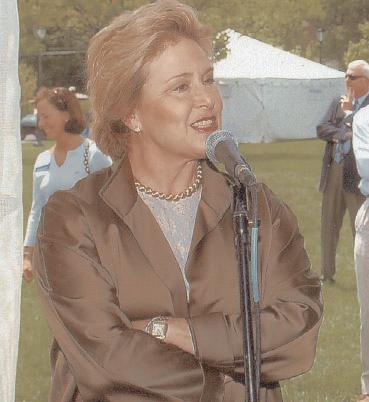

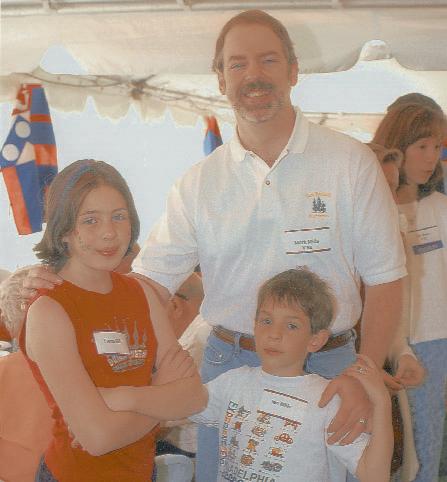
On Saturday,May 11,many alumni and their guests enjoyed attending a variety of Alumni Weekend 2002 events this year on the School’s Philadelphia campus.

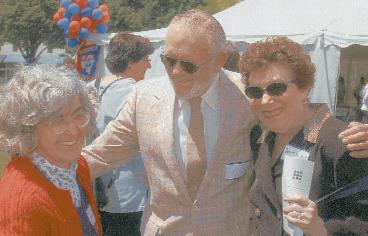
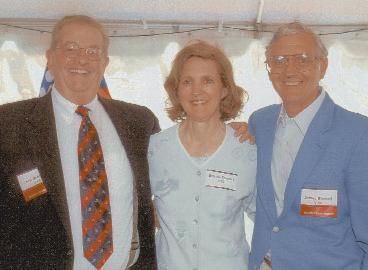

From the Veterinary Medical Alumni Society Annual Meeting to the Alumni Day Picnic with special visitor,University President Judith Rodin,CW’66,and from the Parade ofClasses down Locust Walk to the Alumni Dinner Honoring the 2002 Reunion Classes at the University ofPennsylvania Museum,Alumni Weekend 2002 was an exciting time for alumni to return to Penn.
Save the date! Alumni Weekend 2003 and reunions for classes ending in “3”or “8”will be held on May 16-18.
Corinne R.Sweeney,D.V.M.,professor of medicine of New Bolton Center,receives the 2002 Excellence in Teaching Award from Daniel D.Bleicher,V’53.The Veterinary Medical Alumni Society presents this annual award to an educator recommended by recent graduates.
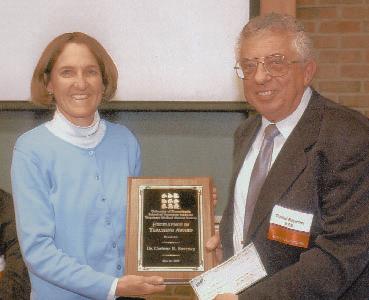
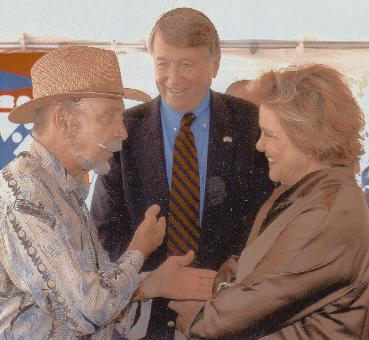
To mark its 10th year reunion,the Class of 1992 donated its yearbook sale proceeds to help purchase a pulse oximeter for the new Isolation Unit in VHUP.Dean Kelly accepted the device from class members:Caroline L.Merchant,Marko R.Sima,and Dina A.Rovere.


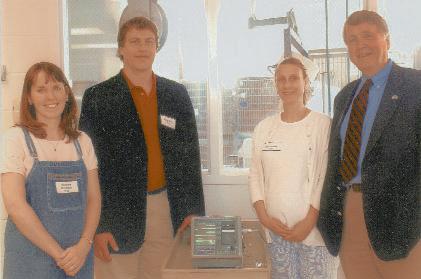

The Gerstenfeld Family:Traudi,Sheldon,V’68,and Tyler,C’05.


Moon,Loy C.Awkerman,Robert D. Barndt,John L.Wilkins,Fred R.Guenther,Jr.,John E. Whitehead,Arthur P.Coogan,Donald E.Siffin, Robert M.Schwartzman,Sidney H.Flaxman,and Raymond Schlosser,Jr.
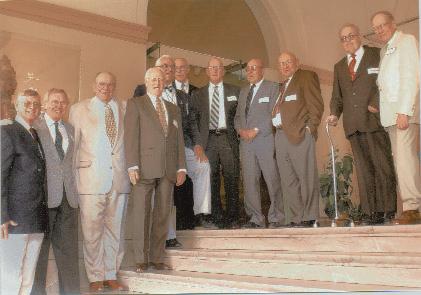
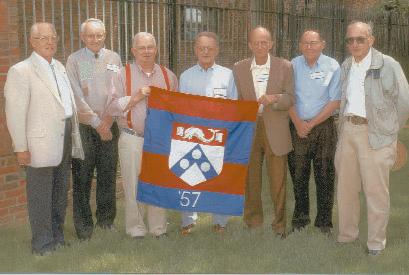

H.Yuan,Kaisa H.Hodgkins, Anita Impellizeri,Michele M.Campellone,Kelly A. Papke,and Dexter J.Archer.
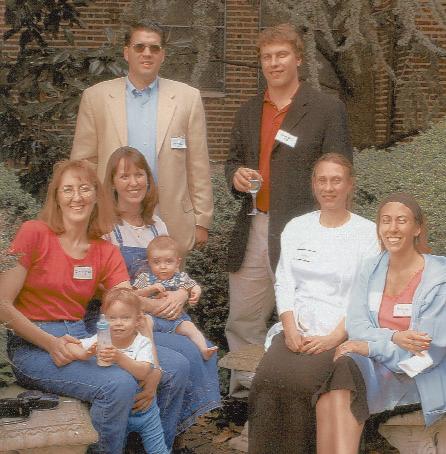
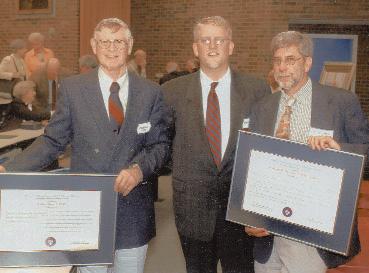
During the Annual Meeting ofthe Veterinary Medical Alumni Society (VMAS) ofthe University ofPennsylvania School ofVeterinary Medicine on May 11,2002,three alumni received a 2002 Alumni Award ofMerit.They are:
Dr.Calvin Moon,a 1952 graduate.A resident ofAllentown,N.J.,he helped to establish the Columbus,N.J.,Central Veterinary Hospital,and is a former president ofthe New Jersey Veterinary Medical Association.He has been honored with the New Jersey Distinguished Service Medal,the state’s highest military honor,for his service in the Submarine Service in the Pacific Theater during World War II.
Dr.M.Phyllis Lose,a 1957 graduate.A resident ofHaines City,Fla.,she owned Circle E Equine Hospital in Bensalem,Pa.,and is a commission veterinarian at Tampa Bay Downs race track in Tampa,Fla.She is the author of
Veterinary Medical Alumni Society
Salutes
Class of1952
For advancing veterinary care in your community by helping to establish the Columbus,N.J.,Central Veterinary Hospital,which in 1976 was only the second central veterinary hospital in the Eastern United States.
For taking a leadership role in the New Jersey Veterinary Medical Association by serving as its president,and by serving on the scholarship committee of the New Jersey Veterinary Foundation.
For taking an active interest in your profession as an honor roll member ofboth the American Veterinary Medical Association and the New Jersey Veterinary Medical Association.
For your service to the community that promotes the good name ofthe School ofVeterinary Medicine, most notably as a past president ofthe Rotary Club of Bordentown,N.J.,and as a member ofthe Northern Burlington County,N.J.,Regional High School Board ofEducation.
For being honored with the New Jersey Distinguished Service Medal,the state’s highest military honor,for your service in the Submarine Service in the Pacific Theater during World War II.
For being recognized by the School ofVeterinary Medicine with its Centennial Award ofMerit in 1984 for your outstanding contributions to veterinary medicine.
The Alumni Award ofMerit is presented to you this 11th day ofMay 2002.
several books including “Blessed Are The Broodmares”and “Blessed Are The Foals.”
Dr.Lawrence T.Glickman,a 1972 graduate. A resident ofWest Lafayette,Ind.,he is Professor ofEpidemiology and Public Health and Head ofSection ofClinical Epidemiology, Department ofVeterinary Pathobiology,Purdue University School ofVeterinary Medicine. He has conducted studies that have focused on how animals can serve as sentinels ofenvironmental health hazards to people.
The VMAS honors alumni who have made outstanding contributions to their profession and the School with the Alumni Award of Merit.The award is given annually to recognize distinguished graduates for their contributions that advance knowledge in biomedicine,promote the welfare ofanimals through public education ofanimal owners,and benefit
University ofPennsylvania School ofVeterinary Medicine
Veterinary Medical Alumni Society Salutes
Class of1957
For being a pioneer in the field ofveterinary medicine as the first woman to: establish an equineonly practice; become a member ofthe American Association ofEquine Practitioners; and be appointed the Official Veterinarian ofthe Devon Horse Show,the oldest and largest outdoor multi-breed horse competition in the United States.
For your landmark book,“Blessed Are The Broodmares,”which,when first published in 1978,it was the only existing source to contain such a wide range ofinformation on the care ofthe breeding of mare from mating,through gestation,to foaling and nursing,and on the care ofthe young horse.Your other books,“Blessed Are The Foals,”and your autobiography,“No Job For a Lady,”have advanced the knowledge ofyour fellow professionals,horse owners and breeders.
For your various research projects that have advanced the health and welfare ofshow,race,and pleasure horses.
For taking an active interest in your profession as a member ofthe American Veterinary Medical Association,the Pennsylvania Veterinary Medical Association,and the Association for Women Veterinarians.
The Alumni Award ofMerit is presented to you this 11th day ofMay 2002.
From
Moon,V’52,Eric M. Bregman,V’95,VMAS President,and Lawrence T. Glickman,V’72.(M.Phyllis Lose,V’57,was unable to receive her award in person.)
society through civic activities which foster the advancement ofthe profession and the School’s good name.
University ofPennsylvania School ofVeterinary Medicine
Veterinary Medical Alumni Society Salutes
Lawrence T.Glickman,V.M.D.
Class of1972
For educating many veterinarians for more than 20 years in your faculty positions at various veterinary schools,most notably since 1988 as Professor of Epidemiology and Public Health and Head ofSection ofClinical Epidemiology,Department ofVeterinary Pathobiology,Purdue University School ofVeterinary Medicine.
For your numerous honors that promote the School ofVeterinary Medicine’s good name,including the Veterinary Student Government Award for Excellence in Teaching from your alma mater in 1987 and the Pfizer Research Excellence Award in 1997.
For your various research projects that have advanced the health and welfare ofanimals and humans,including how animals can serve as sentinels ofenvironmental health hazards to people.
For your contributions to books,journals,and technical reports,which have advanced the knowledge ofyour fellow professionals and animal owners and breeders.
For your service to Purdue University by serving on its faculty senate and numerous academic committees.
The Alumni Award ofMerit is presented to you this 11th day ofMay 2002
During the New Jersey Veterinary Medical Association’s annual meeting in March 2002, Amos W.Stults was honored with the Veterinarian ofthe Year Award from the Central New Jersey VMA.He is an emeritus member and former president ofthe NJVMA.Dr.Stults is past director ofHopewell Veterinary Group, located in Hopewell,N.J.,where his son, Amos W. Stults,Jr.,V’73,practices.
Martin M.Kaplan wrote The Pennsylvania Gazette that he is director ofthe Pugwash Conferences on Science and World Affairs office in Geneva.Pugwash,recipient ofthe 1995 Nobel Peace Prize,is an international scientific organization dedicated to reducing and eliminating the threat posed to humanity by nuclear weapons and war.Dr.Kaplan has been married since 1959 to Lenna,and they have two sons, Peter and Jeffrey,both doctors in the U.S.;their daughter,Alexa,and two grandchildren,Emma and Alex,live in France.
Jack K.Robbins was honored by the California Thoroughbred Trainers with a dinner in April 2002 to benefit the Edwin J.Gregson Foundation,which provides scholarships for the children ofCalifornia backstretch workers. A longtime equine practitioner at California racetracks,Dr.Robbins was recognized for his many contributions to the Thoroughbred horse racing industry.
William A.Truban was profiled by the Virginia-Maryland Regional College of Veterinary Medicine (VMRCVM) in their Winter-Spring 2002 newsletter.Two sons,both VMRCVM graduates,followed in their father’s footsteps and are veterinarians.One son has taken over the Shenandoah Animal Hospital, which Dr.Truban started in Woodstock,Va.,in the same year he graduated from Penn.Dr. Truban served in the Senate ofVirginia for 21 years,including 15 years as Minority Leader.As a senator,he was instrumental in the establishment ofthe VMRCVM.Dr.Truban also has served as president ofthe Virginia Veterinary Medical Association and been honored as their Veterinarian ofthe Year.
William M.Adams,Jr., e-mailed his own memories after reading the special New Bolton Center 50th Anniversary issue of Bellwether.Dr. Adams wrote,in part,“What a flood ofwonderful memories you elicited.We certainly did not see clinical cases in those days at NBC but we were exposed to an exotic environment (as opposed to West Philly),flavored with a most sincere,dedicated faculty.… We all knew our class roll alphabetically and could spiel it offin our sleep.We were always present because someone would say ‘here’when your name was called.… There was,always,Dr.Boucher,a more dedicated,loyal Penn faculty member did not exist.My,how we responded to big B.He came down on us like a thundercloud ifwe did not give 100%.Another classmate,Bill Nehoda,and I went deer hunting that meant taking time off, skipping school that is.Well big B had no use for that.Dr.Boucher never forgot us at special chore time nor did he ever forgive us.However we became very good personal friends thereafter.… Dr.Marshak’s description ofhis first glimpse of the ‘antediluvian Quad’brought to mind the time our five-year-old son was placed on the back ofa huge drafter in Huidekoper Field.He promptly fell offbut due to the amount of organic material in the Field he was not injured.”
Todd Addis was also moved to write after reading the New Bolton Center 50th Anniversary issue of Bellwether.Dr. Addis reminisced about the senior year pranks ofhis class and those ofthe classmates ofhis father,Clarkson Addis,Sr.,V’17.“My father’s classmates [outdid the pranks ofmy class] by the dismantlement ofa professor’s carriage,moving it to the roof of[the Quadrangle Building] and reassembled it in the hitching position.I guess there was no safe place to tie the horse on the roofso they left him earthed,”wrote Dr.Addis.
Uri Bargai,professor emeritus at The Koret School ofVeterinary Medicine ofThe Hebrew University ofJerusalem,wrote to Dean Kelly after receiving the special New Bolton Center 50th Anniversary issue of Bellwether.Dr.Bargai wrote,in part,“Reading the last Bellwether was exceptionally emotional to me.It arouse back all my memories from my days at the School, when we lived as students in the Farm House, later renamed the Allam House.These were the
days when Bill Boucher,Bob Marshak,Charlie Raker,Dave Detweiler,and Jacques Jenny were our immediate teachers with whom we associated on a daily basis since there were only 37 students in the class.”He continued,“It was this issue of Bellwether which brought back to me the beginning ofmy 43 years ofprofessional activity,and the spirit ofmy alma mater.”
Barry N.Kellogg,team leader ofVeterinary Medical Assistance Team (VMAT) 1,was honored with the other VMAT team leaders for aiding in the search-and-rescue efforts at Ground Zero in the wake ofthe September 11 terrorist attacks.The team leaders received the American Veterinary Medical Association’s (AVMA) President’s Award during its Annual Convention in July 2002.The award recognizes individuals and groups inside and outside veterinary medicine who have made a positive impact on animal,human or public health, veterinary organizations,and the profession. According to Dr.Kellogg,“We’re truly humbled and honored by this recognition.We had a chance to do something even ifit was small, and for that we are grateful.”
During the Massachusetts Veterinary Medical Association’s annual meeting in May 2002, Dr.Kellogg was honored with a Merit Award for his dedication and leadership ofVMAT-1.
Lenn R.Harrison, director ofthe Livestock Disease Diagnostic Center (LDDC) at the University ofKentucky College ofAgriculture, was quoted in the May 13,2002,issue of The New York Times about Mare Reproductive Loss Syndrome (MRLS).The LDDC is charged with the diagnoses ofanimal diseases and performance oftests which safeguard the health ofthe animal population in Kentucky,and has played an active role in studying MRLS,a disease that has occurred among pregnant mares in central Kentucky and resulted in losses estimated at $336 million in 2001 for the Thoroughbred industry.
Richard A.Mansmann was inducted in 2002 into the International Equine Veterinarians Hall ofFame.The Hall ofFame was created in 1997 by the American Farriers Journal to recognize veterinarians who have contributed
(continued on page 18)

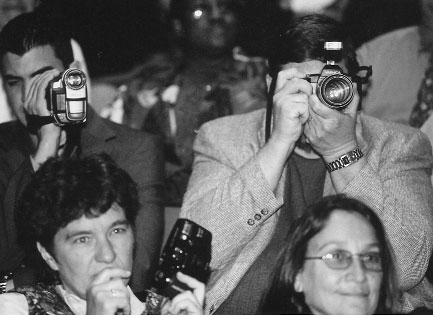

The Class of2002 is the 117th graduating class ofthe School.On May 13,72 women and 33 men took the Veterinarian’s Oath,bringing the total number ofgraduates to 5,834.

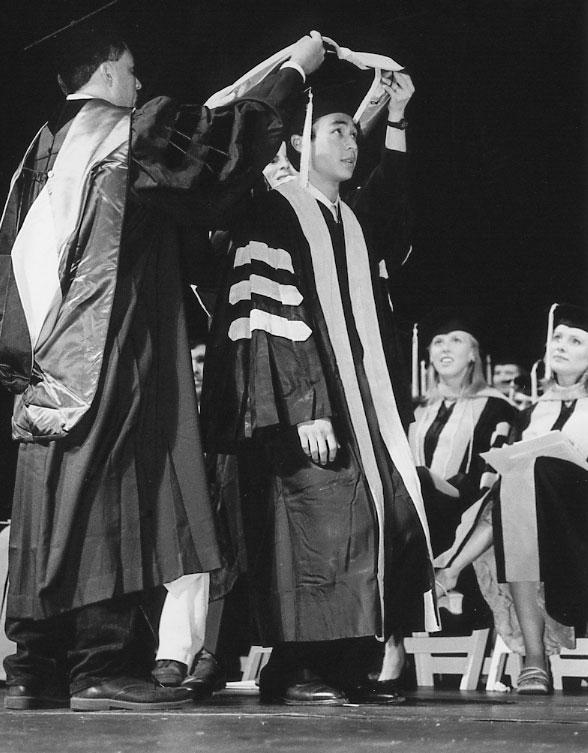
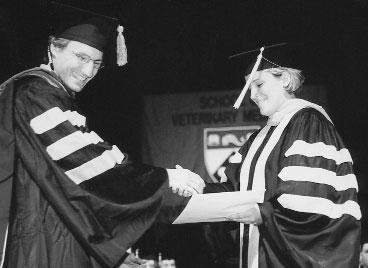
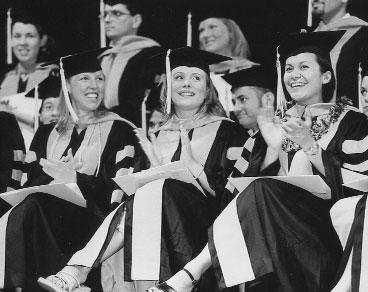
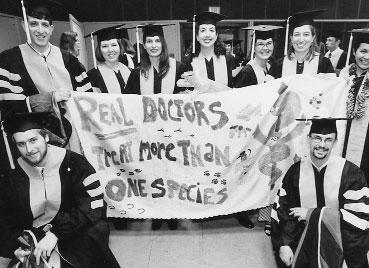
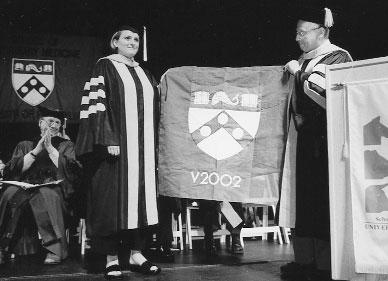
Dean Alan M.Kelly greeted the families and friends ofthe graduates in the Zellerbach Theatre at the Annenberg Center on campus. Board ofOverseers Chair Christine Connelly addressed the graduates and the Commencement Address was delivered by Lester M. Crawford,D.V.M.,Ph.D, the deputy commissioner ofthe Food and Drug Administration, United States Department ofHealth and Human Services.He is the first veterinarian to hold this position.
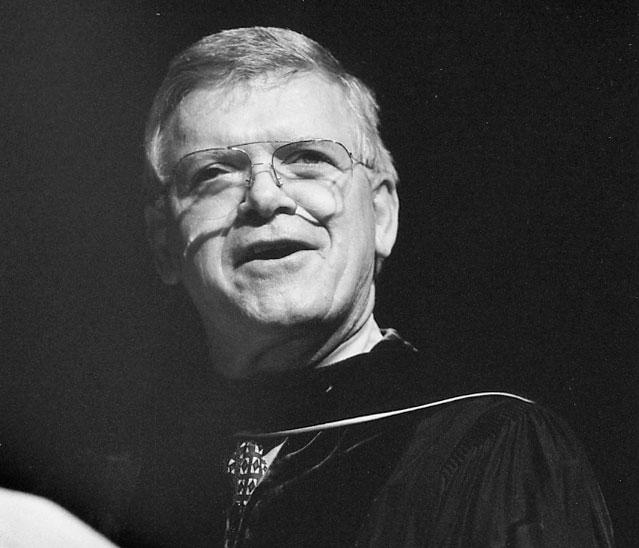
Dean Kelly,with the assistance of Dr.Ronald Harty and Dr.Amy Kapatkin, whoeach were honored in April with the Dean’s Award for Leadership in Education –Dr.Harty in basic science education and Dr.Kapatkin in clinical science education –and Associate Dean Jeffrey Wortman,V’69, presented the diplomas.
Class President Christine Bohn accepted the class flag from Dr.Robert Stewart,V’68, who represented the Veterinary Medical Alumni Society. Dr.Kenneth J.Drobatz,Carl J. Norden Distinguished Teacher Awardee,assisted the dean with the awarding ofprizes. Pennsylvania Veterinary Medical Association President Dr.James R.Rummel,V’79, administered the Veterinarian’s Oath.
Christina Lynn Anderson
Hadley Spencer Bagshaw
Szczepan Waclaw Baran
Alison Brady Beale†††
Christine Bohn
Kenyon Jeannette Brewer
Jeleen Johanna Angeles Briscoe
Tara Jean Britt
Micah Che Brodsky
Jon David Roy Calsyn
Vincent W.Carroll
David John Champaigne
Angie Lynn Shaffer Cheek
Catherine S.C.Cheng
Rosalind Siu-Yee Chow
Joyce Kimberly Cohen
Michael Andrew Cohen
Sherri Sue Cokefair
Edward Serge Cooper
Sarah Newton D’Oench†
Liza Ivana Dadone
Edwin Wylie Darrin
Danalyn Marie Dess
Teri Lynn Drean
Marcilyn Frances Duman
Leo William Egar
Julie Engiles†
Todd Charles Estelle
Leonard Pearson Prize
Nancy Soares
J.B. Lippincott Prize
Alison Brady Beale
1930 Class Prize in Surgery
Julie Engiles
Auxiliary to the American Veterinary Medical Association Prize
Christine Bohn
Faculty/Student Chapter,AVMA Prize
Alison Brady Beale
Phi Zeta Award
Katherine Suzanne Masek
American Animal Hospital Association Award
Kimberly Rust Goodrich
American Association ofFeline Practitioners Award
Amanda Jo Rouen
Amy Faulls
Tracy Anne Filler
Kristen Nicole Fischer†††
Carol Frollo
Danielle Therese Frost
Rebecca Lynne Fulton
Melissa Christine Geedey†
Adam Craig Gerstein
Christopher John Gibson
Babette Gladstein *
Kimberly Rust Goodrich†
Elizabeth Le Senne Gordan††
Margaret Coates Gordon
Andrew Lee Greller
Steven Harry Gross
Jennifer Williams Gschwend
Aspen Alexis Hammond
Adrienne Hancock†
Amy Louise Hancock
Kendra Diane Hearon
Jeffrey Jay Horst
Charlie Chun Hsu
Robert Alan Huddleston
John Alton Inkley
Rachael Joan Johnson†
Carlin Frances Jones
Heather Rachelle Jones
Megan Elizabeth Julian
Rachel Ann Kaufman
Angela Beth Keffer
James Stewart Kehler
Heather Elizabeth Kirchart
Erika Lauren Krick†††
Kristin Margaret Kutscher
Sara Pola Langsam
William Richard LaSota
Patty Ann Lathan
Annette Marie LePère
Bryan Richard Lohr
Jeffrey John Luetke
Heather Anne Lyons
Erin Nedene Mairs†††
Katherine Suzanne Masek *††
Mary Blair McConnel
Paul Joseph McGough
Craig McLahan
Catherine Marie McManus
Amy Dae Nagy
Beth Ann Nebzydoski
Tracy Elizabeth Norman††
Kenneth Davidson Norris
Karen Theresa Oberthaler††
Kristina Brager Olsen††
Amy-Lynn Parkman
Lisa Maria Pasquarello
Brooke Scott Piercy
Erica Lynn Reineke††
Frieda Catherine Rest
Amanda Jo Rouen
Melissa Darleen Sánchez-Pillich *†††
Daniel Loren Schar
John Donald Schrank
Hillary Alison Sheipe-Oppenheim
Amy Bucher Shokek
Shari Cyd Silverman
John Daniel Sivick
Kevin Patrick Smith
Nancy Soares
Jennifer Ivy Sorowitz
Ian Brett Spiegel††
Angela Christine Summers
Robin Christi Valentine
Lennie Rae Jeannette Vangorder
Melinda Frank Waskow†
Steve Roger West
Kelly Patricia Yamada *
Brian Caffrey Young
*Indicates August 10,2002 Graduates
December 21,2001 Graduates
Jude Fiorini
Amy Elizabeth Matthews†
††† Summa Cum Laude
†† Magna Cum Laude
† Cum Laude
American College ofVeterinary Radiology Award
Hadley Spencer Bagshaw
American College ofVeterinary Surgeons Prizes
Small Animal Surgery Prize
Alison Brady Beale
Large Animal Surgery Prize
John Daniel Sivick
American Society ofLaboratory Animal Practitioners Student Award
Joyce Kimberly Cohen
Everingham Prize for Cardiology
David John Champaigne
Field Service Prize
Angie Lynn Shaffer Cheek
The Peter Francis Anatomy Award
Melissa Darleen Sánchez-Pillich
Hill’s Award
Amy-Lynn Parkman
Iams/VECCS Award for Excellence in Veterinary Emergency and Critical Care
Amy-Lynn Parkman
James Hazlitt Jones Prize in Biochemistry
Melissa Christine Geedey
Large Animal Medicine Prize
Sara Pola Langsam
Large Animal Surgery Prize
Tracy Elizabeth Norman
Merck Awards
Small Animal Award
Brian Caffrey Young
Large Animal Award
Julie Engiles
1956 Class Medal for Achievement in Pathology
Melissa Darleen Sánchez-Pillich
George M.Palmer Prize
Sarah Newton D’Oench
Pharmacia & Upjohn Awards
Small Animal Award
Margaret Coates Gordon
Large Animal Award
Kristina Brager Olsen
Charles F.Reid Sports Medicine and Imaging Award
Steven Harry Gross
Lynn Sammons Food Animal Award
John Alton Inkley
Morris L Ziskind Prize in Food Animal Medicine
Christina Lynn Anderson
Morris L.Ziskind Prize in Public Health
Erika Lauren Krick
Patty Ann Lathan
(continued from page 15)
to the knowledge and recognition ofproper hoofcare for horses.He was recognized for his outstanding accomplishments in equine hoof health.Dr.Mansmann has recently rejoined North Carolina State University College of Veterinary Medicine as clinical professor and director ofthe College’s new Equine Health Program.He is the co-author ofthe definitive book, Equine Lameness,which investigates therapy,the disease and treatment.
1971
Gerald E.Pietsch writes that that his son, Gregory,has just graduated from the University ofMinnesota College ofVeterinary Medicine and has accepted a one-year rotating internship in Atlanta.Dr.Pietsch’s daughter,Katherine, has just completed her first year at Tufts University School ofVeterinary Medicine.
1972
During the Massachusetts Veterinary Medical Association’s annual meeting in May 2002, Paul C.Gambardella was honored with a Merit Award for his contributions to the profession and the
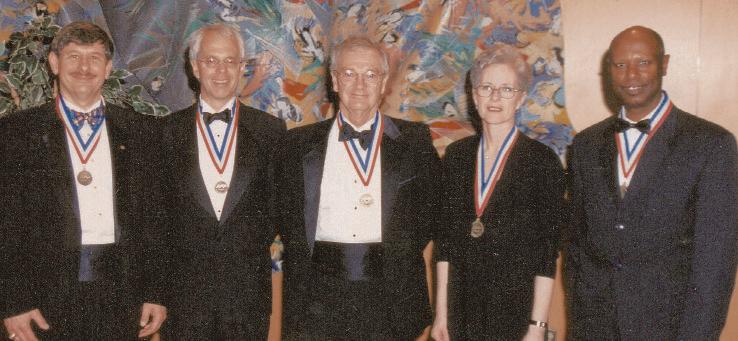
dressage,driving,eventing,and jumping.She has been an AAEP member since 1974 and is co-facilitator ofthe Performance Horse Forum at the AAEP Annual Convention.
R.Wayne Randolph was honored with induction as a Distinguished Practitioner in the National Academy ofPractice in Veterinary Medicine ofthe National Academies ofPractice (NAP) in April 2002.Founded in 1981,the NAP is an organization devoted to promoting quality health care for all through interdisciplinary practice,education and research.The NAP has participated in important healthcare public policy debates,and has promoted the field of interdisciplinary efforts through health policy forums and membership symposia,and through the creation ofpolicy and position publications and papers.
Salvatore M.Zeitlin was profiled by the Palm Beach Post in July 2002.Dr.Zeitlin volunteers as the executive director and veterinarian at the Palm Beach Zoo in West Palm Beach,Fl. According to Dr.Zeitlin,“I am motivated and dedicated to do whatever I can to create the best possible zoo for this community.”He also continues a limited role in his former practice,VCA Palm Beach County Animal Hospital in Lake Worth,Fl.
mid-1970s,have left the Michigan State University College ofVeterinary Medicine for the Atlantic Veterinary College at the University ofPrince Edward Island.Sally serves as associate professor and Director ofAnimal Resources & Attending Veterinarian.Richard is professor ofsurgery in the Department ofCompanion Animals.
Anna E.Worth was elected to the board of directors ofthe American Animal Hospital Association on March 27,2002.Dr.Worth is the hospital director and owner ofthe West Mountain Animal Hospital located in Shaftsbury,Vt.
1979
Margaret Landi received the Charles River Prize from the American Veterinary Medical Association during its Annual Convention in July 2002.This prize is awarded by the Charles River Foundation to recognize distinguished contributions to the field oflaboratory animal science by an AVMA member veterinarian.A worldwide vice-president ofLaboratory Animal Science for Research and Development at GlaxoSmithKline,she provides guidance to over 400 professional staffmembers in six countries who work and care for animals.Dr.Landi helped to establish the first post-doctoral program in laboratory animal medicine at the company.
human-animal bond through his commitment to MVMA and his work at Angell Memorial Hospital in Boston,most recently as chiefofstaff.Dr. Gambardella now serves as the director ofOradell Animal Hospital in Paramus,N.J.
1973
Midge Leitch was recently elected to a threeyear term as the District II-Middle Atlantic director ofthe American Association ofEquine Practitioners (AAEP).Dr.Leitch owns Londonderry Equine Clinic,a referral veterinary practice in Cochranville,Pa.,where she specializes in the care ofperformance horses competing in
Raymond W.Stock has been selected as a 2002-03 American Veterinary Medical Association/American Veterinary Medical Foundation Congressional Science Fellow.Congressional Science Fellows serve for one year in Washington,D.C.,as consultants,researchers,and scientific resources on the staffs ofMembers ofCongress or Congressional Committees.Dr.Stock is an associate veterinarian at the VCA Northside Animal Hospital in Bethlehem,Pa.,and is pursing a Master ofBioethics Degree at Penn.
Sally Oblas Walshaw and her husband, Richard,who was a resident at VHUP in the
Steven W.Atwood was profiled by The Martha’s Vineyard Times in May 2002.Dr. Atwood performed an emergency cesarean section on a five-year-old miniature horse.The surgery was conducted with the assistance ofa gynecologist and in a barnyard,as there is no medical facility on Martha’s Vineyard to accommodate horses.According to Dr.Atwood,“It was as MASH as it could get.”He added,“To save any animal that could not be saved under any other circumstances is just wonderful.”
Julia A.Langenberg was quoted in the August 7,2002,edition of The New York Times about chronic wasting disease,the variant of mad cow disease,that has killed deer and elk in Wisconsin.Dr.Langenberg serves as the veterinarian and administrator ofthe deer testing program for the Wisconsin Department of Natural Resources.
Gary A.Raiczyk is the owner ofa new veterinary hospital,Plantation Pet Health Center, in Frisco,Texas.Dr.Raiczyk was remarried on August 15,2001,and honeymooned with his new wife,Patti,in Jamaica.The veterinarian of Boudreaux,a bloodhound,Dr.Raiczyk nominated the dog for induction into the professional category ofthe Texas Animal Hall of Fame.Boudreaux was inducted in November 2001 by the Texas Veterinary Medical Association in recognition ofhis work as a K-9 member ofthe Search One Rescue Team,which serves the North Texas area.In September 2001,the American Kennel Club also honored Boudreaux with its Award for Canine Excellence as the top search and rescue dog ofthe year in the nation.
Mary P. Ezzo-Meiers was profiled by The Philadelphia Inquirer in September 2002.In “Running is for the dogs – and a vet,”Dr.EzzoMeiers is interviewed about running with her dogs.“Just like people,dogs were meant to move,”she said.“Ifyou don't give them something to do,a way to release energy and relieve stress,they'll go bananas and tear things up." Dr.Ezzo-Meiers has run in every Philadelphia Distance Run,a halfmarathon,since the first race in 1977.She practices at Buck Road Animal Hospital in Holland,Pa.
Charles E.Rupprecht was quoted in the August 13,2002,edition of The New York Times about federal and state efforts to eradicate rabies in the wild by dropping millions of vaccine-laced pieces ofbait throughout the United States.Dr.Rupprecht is the chiefofthe rabies section at the Centers for Disease Control and Prevention.
During the Massachusetts Veterinary Medical Association’s annual meeting in May 2002, Elizabeth S.Sinnigen was honored with a Merit Award for her service to MVMA members for a number ofyears in a variety of capacities.In addition,she was recognized for tirelessly representing MVMA in the development ofthe Massachusetts Emergency Animal Response Team.Dr.Sinnigen has also,through private practice,worked to strengthen the human-animal bond with clients and contributed to colleagues’development through mentoring and informal support.
Teresa J.Sylvina has been recently named Virginia Tech’s University Veterinarian and Director ofthe Office ofLaboratory Animal Resources.She will also serve as an assistant professor in the Virginia-Maryland Regional College ofVeterinary Medicine’s Department ofBiomedical Sciences and Pathobiology.She received her Master’s ofPublic Health with an emphasis on international health from The Johns Hopkins University.Dr.Sylvina also earned a Humanitarian Assistance Certification from Johns Hopkins via a joint program their School ofHygiene and Public Health operates with the International Committee ofthe Red Cross.She is also board certified by the American College ofLaboratory Animal Medicine.
Nancy E.Brennan-Gorman was quoted in the June 2,2002,edition of The New York Times,about Exogenous,a racehorse who died from an accident caused by spooking on the way to the gate in the Breeder’s Cup 2001.A win would have guaranteed her title as the best 3-yearold filly oflast year’s racing season.Dr.Sue McDonnell,the founding head ofThe Havemeyer Equine Behavior Program at New Bolton Center,was also quoted in the article.
Shirley Yeo Llizo sent this class note via email:“After graduation,I worked in a small/exotic animal veterinary practice in Central New Jersey where I met my husband, Nestor Llizo.In May 1990,I was invited to be the veterinarian at the Singapore Zoo where I had worked before coming to America for my studies.I spent three exciting years in Singapore,where we got married,and lived on the zoo grounds.In April 1993,we returned to New Jersey,and a year later moved for my present job at the Houston Zoo.It has been, and still is,an exciting and rewarding career as a zoo veterinarian,working with such a variety ofanimals,many ofwhich are endangered.

The excellent education,which I received at Penn,helped prepare me for this wonderful career.For anyone who wishes to contact me, my work number is (713) 533-6630 and my email address is <syeollizo@juno.com>.”
Michele Ann Salata serves as secretary on the 2002-03 Massachusetts Veterinary Medical Association Executive Board.
1990
Peter L.Vogel is a new diplomate ofthe American College ofVeterinary Surgeons.Dr. Vogel is a staffsurgeon with the Southern California Veterinary Referral Group in Irvine,Calif.
1991
William P.Rives was profiled by The Philadelphia Inquirer in July 2002.Since 1993, Dr.Rives has served as the veterinarian at the 350-acre Six Flags Wild Safari in Ocean County,N.J.The park’s unique 4.5-mile drivethru configuration makes it completely different from visiting a zoo,as animals can walk right up to vehicles.The park features 1,200 animals representing 52 exotic species.According to Dr.Rives,“I remember when the park got built,”in 1974.“I was a kid then,but I always wanted to be a vet,” said Rives.Before graduating from Penn,he worked at the park as a gatekeeper and seasonal warden.
1993
Mindy A.Cohan answers pet questions monthly on “Kids Corner,”a one-hour,call-in radio program for kids aged 7-16,which is produced at WXPN-FM,the non-commercial radio station ofthe University ofPennsylvania. Dr.Cohan practices at Old Marple Veterinary Hospital in Springfield,Pa.
1995
Kathryn E.Kropp was profiled in the Pottsville Republican & Evening Herald of Pottsville,Pa.,in July 2002.She recently
returned to her hometown ofTamaqua,Pa., and opened her own practice,Companion Animal Hospital.“I’ve been really lucky, because I always knew what I wanted to do forever,”she said ofbecoming a veterinarian. According to Dr.Kropp,“I’ve always loved animals ...You want to help them,but they don’t talk.They can’t tell you what’s wrong.You have to find out.”
Richard A.Zappala II has been selected as a 2002-03 American Veterinary Medical Association/American Veterinary Medical Foundation Congressional Science Fellow.Dr.Zappala is an equine veterinarian,and is the founding partner ofPure Pride Spring Water,which donates
To find a former classmate and to sign-up for a permanent e-mail forwarding service: Join the University ofPennsylvania Alumni OnLine Community for free at <www.alumniconnections.com/olc/pub/UPN>.After you register, you can search the On-Line Directory,which is a great resource for personal and professional networking and an easy way to keep up-to-date on fellow alumni.You can also sign-up for a permanent e-mail forwarding service,which will forward messages received at your permanent Penn address to the e-mail address ofyour choice.
To update your alumni record: You can update your record via the University of Pennsylvania Alumni On-Line Community OnLine Directory.You may also contact Elizabeth McNamara at (215) 746-7461 or via e-mail at <emcnamar@vet.upenn.edu>.
To make a gift or for information on supporting the School of Veterinary Medicine: Make a gift with your credit card through a secure online transaction at <www.upenn.edu/gifts>.For information on supporting the School,visit the Alumni & Friends web site at <http://alumni.vet.upenn.edu> or contact Joshua E.Liss at (215) 898-1481 or via e-mail at <lissj@vet.upenn.edu>.
To request a transcript,certification of graduation,or replacement diploma:
For information on requesting a transcript,visit the Office ofthe University Registrar’s web site at <www.upenn.edu/registrar/trans.html> or call (215) 898-7511.For information on requesting a certification ofgraduation,which does not require a transcript,contact the School’s Office of Student & Curricular Affairs at (215) 898-3525 or via e-mail at <student-affairs@vet.upenn.edu>.
For information on ordering a replacement diploma,visit the Office ofthe Secretary’s web site at
a percentage ofits proceeds to AIDS and community-related charities.
E.Scott Weber is the new head veterinarian at the New England Aquarium in Boston.
Blayne P.Bergenstock and Adam D.Miller were married on October 13,2001.Dr. Bergenstock practices at Kinzua Veterinary Clinic in Warren,Pa.Dr.Miller practices at Pine Haven Veterinary Clinic in Kane,Pa.
Elizabeth L.Gordan married Stewart A.Ellis on June 1,2002.She is an intern at The Animal Medical Center in New York City.
Carolyn Mary Selavka,a daughter,Chloe Makenna,on March 25,2002.
1934
Robert L.Hummer on September 19,2001.
1937
Arthur V.Bartenslager on August 11,2002. Dr.Bartenslager joined the School’s faculty in 1948 and retired in 1982 as associate professor ofanimal reproduction.He specialized in fertility and obstetrical problems in cattle.
1939
<www.upenn.edu/secretary/diplomas/ diplomalist.html>.
To post/search employment opportunities for veterinarians: Visit the School’s Veterinary Employment Database at <www.vet.upenn.edu/jobsearch>.
To obtain a Penn Alumni Card: The Penn Alumni Card offers a myriad ofbenefits,including access to the Penn Libraries (does not include borrowing privileges or access to online resources) and discounts on admission to the Morris Arboretum,Class of1923 Ice Rink, and University ofPennsylvania Museum.The charge for the card,which is valid for 10 years,is only $20.For more information,visit <www.upenn.edu/penncard/card/ obtain_alumni.html>.
Alumni Relations and Annual Giving Staff
Joshua E.Liss
Director ofAlumni Relations and Annual Giving
(215) 898-1481
Fax (215) 573-3544
E-mail <lissj@vet.upenn.edu>
Elizabeth McNamara
Annual Giving Coordinator
(215) 746-7461
Fax (215) 573-3544
E-mail <emcnamar@vet.upenn.edu>
Please address any correspondence to: Office ofDevelopment and Alumni Relations
University ofPennsylvania School ofVeterinary Medicine
3800 Spruce Street Philadelphia,PA 19104-6047
Russell D.Holt on March 10,2001. William Murphey on December 11,1990. Harold M.Summers on December 21,2001.
1940
Raymond E.Kerlin,Jr. on June 12,2002.
1943
Albert M.Berkelhammer on July 30,2002. Ellsworth Dougherty III on January 10,2002. Robert B.Frater on November 28,1999. John M.Liscomb on November 14,1996. John Edward Stefanick on April 18,2002.
1945
John H.Hopkins on January 17,2002.
1946
Cecilia D.Powers on April 17,2002.
1947
Thomas E.Bowman on August 10,1995. Howard E.Markle,Sr. on April 27,2002. Father ofHoward E.Markle,Jr.,V’80.
The Pennsylvania Gazette,Penn’s alumni magazine,as part ofits centennial celebration, asked alumni to write about the faculty member who most stimulated them during their years at Penn. Charles D.Knecht,V’56,wrote about Mark A.Allam,V’32,HON’84,who served as dean ofthe School ofVeterinary Medicine from 1953-1973.An excerpt ofDr.Knecht’s response below was published in the May/June 2002 issue ofthe Gazette.
“On arrival as first year students in Veterinary Medicine in 1952,we found a new dean who was a recent practitioner and an accomplished veterinary surgeon.Dean Mark W. Allam proved to be a remarkable surgeon, an enthralling teacher,a unique administrator, a venerable fund-raiser and,most ofall,a friend to all.I can still see him,although he was dean,hurrying into the lecture room from surgery and tying his bow tie as he lectured on the fine points ofsurgery.I can recall assisting him at the surgery table where no fault in instrumentation,technique or temperature ofthe irrigation saline was tolerated.
“In 1955-56,our class decided that faculty should be evaluated by students.As chair ofthe
committee,I was joined by several WW II veteran classmates to present our findings and recommendations to the dean.Although unwarned,he accepted our analyses with grace, thanked us and promised improvements – a first for the School.In later years,Dean Allam developed the benchmark program at New Bolton Center,encouraged benefactors by driving the New Bolton Center horse drawn carriage at weddings and originated the American College ofVeterinary Surgeons,in which I was later privileged to gain diplomacy and to serve as president as he did.
“In all ofhis roles as professor,surgeon, dean,assistant vice president for medical affairs and dean emeritus,Mark was joined by the charming and capable Lila in spreading the friendship ofPenn.It is no wonder that so many ofthe children ofmy era at Penn are named Mark as is my eldest son.Who else could cook scrapple and eggs in the morning after a good night’s sleep in their home and consider us lifelong friends? Who else would exchange similar scrapple with a few pounds of Alabama pecans yearly without fail? And who could speak so plainly ofthe love for Penn,
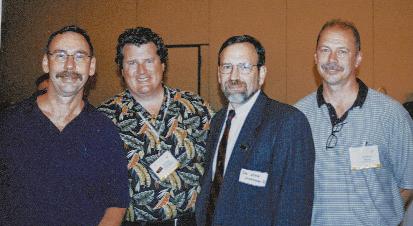

Nearly 100 School ofVeterinary Medicine alumni and their guests attended an alumni reception during the American Veterinary Medical Association Annual Convention in Nashville on July 14,2002. Associate Dean Jeffrey A.Wortman,V’69,welcomed everyone to the reception and spoke about the School’s current activities.Those in attendance were among the first to view On Any Given Day,a new 15-minute video that follows a day in the life ofNew Bolton Center.The video helps to mark New Bolton Center’s 50th anniversary, and it will be shown at alumni gatherings in the future.


only second to the love for Lila,just a few days after her death and nearly hours before his?
“An excellent and memorable professor is not just that knowledge and foster thought,it is he or she who can relate his or her and your experiences to life – all oflife,not just the few years ofclassical education.Dr.Mark Allam lived the life,taught the life and shared the life so that each ofhis students and later colleagues could carry the light ofknowledge and dedication to others.”
Nominations are being sought for three recipients ofthe 2003 Alumni Award ofMerit, which will be presented at the Veterinary Medical Alumni Society (VMAS) Annual Meeting during Alumni Weekend 2003 on May 16-18. The VMAS honors alumni who have made outstanding contributions to their profession and the School with the Alumni Award ofMerit. The award is given annually to recognize distinguished graduates for their contributions that advance knowledge in biomedicine,promote the welfare ofanimals through public education ofanimal owners,and benefit society through civic activities which foster the advancement of the profession and the School’s good name.
Eligible 2003 recipients are members ofthe classes that end in “3”or “8,”and who will be celebrating a five year reunion during Alumni Weekend 2003.Members ofthe VMAS Executive Board will select the recipients from the pool ofnominees.Nominations are due no later than December 31,2002.
For more information or ifyou have any questions,please contact Joshua E.Liss,Director ofAlumni Relations and Annual Giving,at (215) 898-1481 or via e-mail at <lissj@vet.upenn.edu>.For a list ofprevious Alumni Award ofMerit recipients,please visit <http://alumni.vet .upenn.edu/alumniawardofmerit.htm>.
To make a nomination,please send a letter explaining your reasons to:
Joshua E.Liss
Director ofAlumni Relations and Annual Giving
University ofPennsylvania
School ofVeterinary Medicine
3800 Spruce Street Philadelphia,PA 19104-6047
A 1999 University ofPennsylvania School of Veterinary Medicine graduate,I received an excellent clinical foundation on which to build my own methods ofpractice.Before I completed my first year,I recognized the value ofmy veterinary education.It has lived up to its potential,and its true value has no price tag.The critical thinking methodologies Penn emphasizes during the entire four-year education trains the future veterinarian to maintain multiple perspectives while thoroughly working up a case.
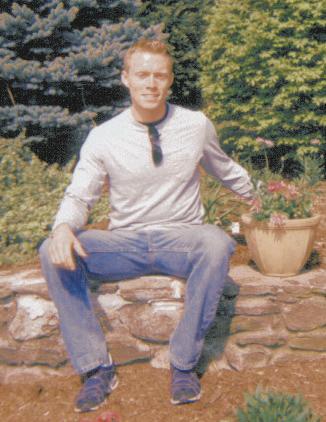
When I entered Penn,I anticipated going into general companion animal practice and hoped to specialize in a discipline.
Before beginning my veterinary education,I worked as a veterinary technician in both general and emergency practices,which gave me an insight about the services offered by each type ofpractice.With a greater interest in emergency practice,I worked part-time as an overnight emergency surgery technician at the Veterinary Hospital ofthe University ofPennsylvania (VHUP),while a veterinary student.
This allowed me to gain additional experience with surgical situations I would potentially
Share news with your classmates about a new position or accomplishment, wedding or birth announcement,by sending your class note today! We accept pictures,too,featuring alumni gatherings, whether it’s from a wedding or minireunion.Be sure to identify everyone in the picture.Pictures will be returned only upon request.Send all your submissions to:
Joshua E.Liss Director ofAlumni Relations and Annual Giving University ofPennsylvania School ofVeterinary Medicine3800 Spruce Street
Philadelphia,PA 19104-6047
Fax (215) 573-3544
E-mail lissj@vet.upenn.edu
face as either a general or emergency practitioner. The practical experience also helped me to better understand the surgical theory I was learning in the classroom.My classmates who worked in other areas ofVHUP also felt that their jobs enhanced their learning experience as a result of the hands-on exposure to subjects previously seen only in textbooks.
As I progressed through Penn and gained additional clinical experience,I developed an interest in diagnostic imaging and planned to pursue a radiology residency.To be considered for a residency, I had to first complete an internship program. Although the prospect of the rigors ofan internship was daunting,I recognized the program’s ability to enhance my clinical skills and make me a better practitioner.In 2000,I completed a companion animal rotating internship at Friendship Hospital for Animals in Washington,D.C.
Unfortunately,I was not accepted into radiology residencies that I applied for 2000-03.
Upon completion ofthe internship,I needed an alternative practice plan in order to continue gaining clinical experience.I entered general practice for approximately a year and a half,but desired to return to emergency medicine and surgery.Therefore,I accepted an emergency-only position at Metropolitan Emergency Animal Clinic (MEAC) in Rockville,Md.Emergency practice allows for more extensive use ofthe clinical education I began at Penn and sharpened during my internship.The heavy caseload requires quick assessment ofclinical presentations,initiation ofdiagnostic modalities,and commencement ofappropriate treatment protocols.
For the first time,I am truly enjoying clinical practice.This sense offulfillment stems from the fact that I feel that each work shift is reminiscent ofa continuing education seminar. Every time I go to work,I am faced with new learning opportunities and diagnostic challenges.In particular,I have effectively diagnosed and treated cases ofhemopericardium and spontaneous bilateral pneumothorax.
The challenges are reminiscent ofthose I faced at VHUP,but I now enjoy the added pressures and responsibilities that once intimidated me as a student.Emergency practice does have qualities that make it less appealing than general practice to many veterinarians,including working odd hours and long shifts,and dealing with less-than-familiar case presentations and an intense work environment.General practice does hold advantages over emergency practice, as many ofmy classmates find enjoyment in working a regular daytime schedule,establishing a consistent client base,and promoting patient wellness through all stages oflife.
The education my classmates and I received at Penn provided us with an excellent framework to the way we approach clinical cases.We feel that the faculty and staffemphasized the importance oftaking a thorough history,performing an organized physical exam,assessing each problem as part ofa differential list,and developing a treatment plan.Following the Subjective,Objective,Assessment,Plan (SOAP) format when working up each case allows for visualization ofthe entire clinical picture,therefore treatment ofthe whole animal.They also stressed the significance ofmaintaining excellent medical records,as our records are truly representative ofthe way we practice.Keeping thorough medical records and SOAPing each case have become cornerstones ofmy practice style.
As each VHUP clinical rotation through a specific discipline was consistently busy,we “Pennwes’”had an advantage over our peers at other veterinary schools.To get the most out ofeach rotation,though,little time was available to focus on topics other than those relevant to the particular discipline.However,the pressure on us to multitask and manage our time helped develop skills applicable to any type ofveterinary practice.In addition,I wished that our rotations required additional interaction with clients, either through actual contact or simulations.
Effective communication skills are not easily taught,but more emphasis on their development early in the education process could be advantageous to the new graduate upon entering clinical practice.The ability to communicate well stems from a clinician’s ability to convey a sense ofboth competence and trustworthiness.As my experience increases,I notice a similar increase in my client communication skills.At MEAC,the clients seeking emergency care for their pets are well
educated and expect thorough diagnostic workups.I feel an obligation to increase client awareness by providing complete explanations of their pet’s diagnostics,treatment,and prognosis.
Although I have reached my current position by taking a route different than the one I intended,the veterinary medical education that I received at Penn has greatly contributed to my satisfaction as a practitioner today.At this point,I am uncertain ifI will reapply for a radiology residency,as emergency practice provides me with professional satisfaction and educational and financial compensation.Owning an emergency practice or specialty service will likely occur in my future,as I recognize the opportunities that business management offers in furthering my veterinary career.
Overall,my classmates and I feel that no veterinary degree program can provide enough education or experience to make a new graduate instantly competent as a veterinarian.The ability to succeed as a practitioner must come from within.Our successes come from our own desires combined with the strong veterinary education we received at Penn.
Patrick Mahaney is a veterinarian practicing emergency medicine and surgery in Rockville,Md. Patrick lives in Washington,D.C.,and enjoys the city’s many cultural offerings and yoga studios.
Saturday,Nov.16 and Sunday,November 17th,2002
Registration/participation fee: $175: Saturday only; $200: Saturday plus Sunday wet labs.
November 16:Lecture Topics
Performance problems in the Race Horse - Dr.Ben Martin
Performance problems in the Sport Horse - Dr.Elizabeth Davidson
Cardiovascular Problems in the Equine Athlete - Dr.Virginia Reef
Obscure Lameness Problems in the Equine Athlete - Dr.Mike Ross
Exercise Physiology:What You Need to Know - Dr.Ric Birks
Evaluation ofCardiac Output and Myocardial Function in Exercising Horses - Dr.Mary Durando
Muscular Problems associated with Poor Performance - Dr.Jill Beech
Motion Correction for Standing Equine MRI - Dr.Lexi Lawrence
Suspensory desmitis and its response to treatment with high energy extracorporeal shock wave therapy - Dr.Olga Seco
Where we stand and where we are moving toward with respiratory surgery - Dr.Eric Parente
All presenters with exception ofDr.Mary Durando are New Bolton Center faculty/clinicians
November 17:Wet Labs
Station A - High speed treadmill demonstration
Station B - Endoscopic evaluation ofupper airway dysfunction detected at speed
Case discussions at 2 stations - halfofparticipants in each group
Station C - Lameness videos
Station D - Scintigraphic case evaluations
CE credits:8 hours
Registration limited to 80 for Saturday sessions,60 (max.) for Sunday wet labs
Saturday Sessions will be held in Woerner Amphitheatre,George D.Widener Hospital for Large Animals, New Bolton Center,Kennett Square,Pa.
Wet Labs to be held in the new Scott Equine Sports Medicine Building,Jeffords Treadmill Building, Scintigraphy station,New Bolton Center.
Please contact Office ofDevelopment,New Bolton Center,for detailed information and registration forms.Tel:610-444-5800.ext.2500 or email Patricia Hall at <phall@vet.upenn.edu>
You want to make a significant gift to the School ofVeterinary Medicine. You might want to keep some income,maybe this year,maybe a few years down the road. Above all,you want to keep things simple.
University ofPennsylvania charitable gift annuities. Your legacy gift to Penn.Lifetime income for you or your loved ones. All with one simple gift.
Gift Annuity,Income Deferred to Age 65
Rates and deductions vary with age and number of annuitants and the timing of the gift. Penn gift annuities are not available in all states. Minimum gift amount is $10,000. Thank you.
With pinhead-sized grafts oftesticular tissue from newborn mammals,scientists at the School have induced mice to produce fully functional sperm from evolutionarily distant species.The result has important implications for preserving the germ lines ofcritically endangered species as well as prized livestock.
The study,in which male mice produced functional gametes first from other mice and then from pigs and goats,is reported in the Aug. 15 issue ofthe journal Nature
“This is the first report ofcomplete spermatogenesis from tissue grafted across species,” said Dr.Ina Dobrinski, assistant professor of large animal reproduction in the School.“The production offunctionally competent sperm from three different mammals indicates that testis tissue grafting may be applicable to a wide variety ofspecies.”

The work also yielded the first functional sperm from immature reproductive tissue, meaning sperm could be derived even from individuals that have not reached sexual maturity.Unlike cryonic approaches to preservation, testis tissue grafting offers a potentially inexhaustible supply ofmale gametes.
Mice with the testis grafts could aid studies ofthe effects ofdrugs – including potential male contraceptives – on sperm production. The mice also give scientists a valuable model to better understand testicular function,many aspects ofwhich remain murky.
Dobrinski and colleagues grafted as much as one cubic millimeter oftissue from the testes of newborn mice,goats and pigs onto the backs of mice.As many as eight miniature testes developed,and in vitro fertilization revealed that the sperm produced by those testis grafts were functional.
“At least 60 percent ofgrafts grew into functional testis tissue under the skin,”Dobrinski said,“and those grafts produced as much sperm,gram for gram,as testes in the donor species.Some grafts grew more than 100-fold.”
Similar cross-species grafts oftesticular tissue have been tried previously,but no sperm cells resulted.Dobrinski speculates that the mice’s backs may have provided both an ideal temperature and suitable blood vessels to allow for the growth offunctional testes.
“Dr.Dobrinski is one ofthe few investigators attempting to remove testicular stem cells and transplant them into recipients,”said
Michael D.Griswold,interimdean ofscience at Washington State University’s School ofMolecular Biosciences,who was not involved in the work.“The fact that she can graft portions of testes from other mammalian species into mice and get sperm produced is an important step forward.”
The work also demonstrates that testosterone and other mammalian hormones can work across species,said David de Kretser,director ofthe Institute ofReproduction and Development at Monash University in Australia.“These data indicate that the hormones produced by the mouse are adequate to stimulate sperm production in a range ofspecies.”
Dr.David Knight, Emeritus Professor ofCardiology,died on July 15.He suffered a heart attack while bicycling near his home.Dr.Knight had retired on June 30, 2001,after 34 years on the faculty.A 1962 graduate ofCornell University College of Veterinary Medicine,he came to Penn in 1964 to study at the then Division ofGraduate Medicine and to join the School’s Comparative Vascular Studies Unit,which pioneered the study ofveterinary cardiology.Dr. Knight’s primary research interests were pulmonary hypertension and heartworm disease.He was a charter member of the American College ofInternal Medicine, a member ofthe American Heart Association and the former president ofthe American Heartworm Society.
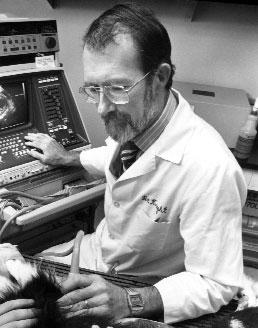
Before taking up bicycling two years ago,Dr.Knight was very involved in water sports.He rowed at Cornell and for Vesper Boat Club and the Bachelors Barge Club in Philadelphia.In 1964,he was an alternate
Spermatogenesis is a highly organized process that generates virtually unlimited sperm cells during adulthood.Continuous proliferation and differentiation ofgerm cells occurs in a delicate balance with various testicular compartments.
“It seems that the testis grafts transferred this entire environment to the recipient mice,” Dobrinski said.
She was joined in the work by Drs.Ali Honaramooz,Amy Snedaker,Michele Boiani and Hans Schöler ofPenn’s Center for Animal Transgenesis and Germ Cell Research and Dr. Stefan Schlatt ofthe University Münster in Germany.Schlatt conducted the group’s research with mice,Honaramooz and Snedaker conducted the work involving pigs and goats, and Boiani completed the in vitro fertilization.
The work was funded by the National Institutes ofHealth,the U.S.Department of Agriculture,the Deutsche Forschungsgemeinschaft,the Marion Dilley and David George Jones Funds and the Commonwealth and General Assembly ofPennsylvania.
on the U.S. Olympic team.He won the Masters World Championship in 1982 in the Netherlands
w ith former Olympian John B.Kelly,Jr.In 1973 he won a gold medal in a world white water canoeing competition in Switzerland.
Dr.Knight is survived by his wife Kr ystina,sons Eric and Christopher and his father,Ernest,and a brother.
A memorial service was held on September 26th at Houston Hall.
The David S.Knight Memorial Fund has been established at the School.
The 25th Annual Feline Symposium was held on Saturday,March 23 at VHUP. The event was generously supported by Kal Kan Foods,Inc.,Mrs.R.V.Clark,Jr. and Mrs.Edith Young.Following are summaries ofthe faculty presentations:
There’s that famous saying,“An ounce of prevention…”However,where vaccines are concerned,prevention can come at a price. Dr. Margret Casal, assistant professor ofmedical genetics at the School,highlighted the many variables one must consider in tailoring a vaccine protocol to a particular cat,and explained the rationale behind VHUP’s feline vaccine protocol.
“Each cat’s vaccine schedule should be based on its lifestyle,breed and environment,” said Dr.Casal.
It should also take into account the risk:reward ratio for giving a certain vaccine to an individual cat.The negative sequela to vaccination include tissue reaction at the injection site;anaphylaxis,which occurs more commonly in dogs than cats;delayed allergic response; introduction ofdisease (more common with intranasal vaccine);and problems associated with vaccine contamination.
In order to minimize these risks,several decisions must be made regarding vaccination strategy.These include type ofvaccine (killed vs.attenuated),route ofadministration –which should most closely mimic the natural route ofinfection,and frequency ofrevaccination.The patient’s immune status should also be taken into consideration.
Modified-live vaccines,which may be intranasal or injectable,have the advantage of evoking a rapid immune response.Unlike some injectable vaccines,intranasal modifiedlive vaccines are not associated with sarcomas. However, they can cause mild clinical signs of disease,as well as a carrier state with possible viral shedding.Modified-live vaccines should never be used in pregnant queens because of potential harm to the fetus.
Killed vaccines,while posing no risk for viral shedding,require adjuvants to effectively stimulate the host’s immune system.These adjuvants have been implicated in the formation ofvaccine-associated sarcomas.Further,
killed vaccines must be boostered.
Frequency ofrevaccination is a subject with many opinions.It is difficult to determine one’s true immunity to an agent by simply measuring antibodies.And cell-mediated immunity,a more targeted response that some agents stimulate,is difficult to measure.While absolute immunity is hard to gauge,annual boosters are probably overkill,said Dr.Casal,because “you’ve already trained the body and the immune system to remember certain virus components.”
Feline calicivirus,which is highly contagious,can cause chronic ulcerative stomatitis with persistent infection.Febrile limping syndrome,a reaction sometimes associated with attenuated calicivirus vaccination,is characterized by shifting lameness and fever.VHUP’s vaccine protocol for calicivirus,which is usually combined with feline viral rhinotracheitis and feline panleukopenia,is a kitten series ofshots given every 3-4 weeks from 6-8 weeks to 12-16 weeks ofage,a first adult booster given at 15 months,and a booster every three years thereafter.
Rabies is more likely to be transmitted by cats than dogs.Although Pennsylvania law states that rabies vaccination is mandatory only for cats that spend any time indoors,Dr.Casal recommended also vaccinating outdoor pets, such as barn cats.The traditional killed-virus vaccine must be boostered one year after the initial vaccine and every three years thereafter. The killed rabies vaccine has been implicated in causing sarcomas.Recently available is a recombinant-virus vaccine that has no potentially-dangerous adjuvants.In the absence of any long-term studies on the efficacy ofthis new vaccine,Dr.Casal recommended boostering it annually.
The feline leukemia virus (FeLV) vaccine is not completely effective,and can cause potentially severe adverse reactions.Therefore,it is only recommended for cats that go outdoors. To avoid maternal antibodies,the vaccine should not be given before 10 weeks ofage, and must be boostered annually.Dr.Casal cautioned that there is no advantage to vaccinating FeLV+ cats.On the horizon are DNA vaccines against FeLV that have longer immunity duration and no reported side effects.
Dr.Casal discouraged vaccinating cats against Chlamydophila,feline infectious peritonitis (FIP) and bordetella.She cited the low
disease prevalence ofChlamydophila and the high frequency ofadverse reactions to the vaccine.Because oftheir questionable efficacy,she added,the FIP and bordetella vaccines should not be routinely administered.
Feline immunodeficiency virus (FIV) vaccines,though not yet commercially available, are currently in development.The most promising ofthese are the inactivated dual-subtype and the fixed-infected-cell vaccines.
The feline mystique can be breathtaking for cat fanciers.Likewise,many medical conditions can be breathtaking literally for cats. Dr.Reid Groman,lecturer in emergency and critical care medicine at the School,presented the manifold causes offeline respiratory disorders.
Cats are subject to a variety ofupper and lower respiratory tract problems.These include infection,nasal foreign body/polyp/malignancy,allergic airway disease,pleural space disease and congestive heart disease.Other afflictions, like stress,pain and anemia,can mimic primary respiratory disease by causing increased respiratory rate or tachypnea.
The most common upper respiratory disorder in cats is chronic nasal discharge secondary to infection.“We see cats all the time presented with chronic upper respiratory infections (URIs),”Dr.Groman said.“These chronic snuffling cats are among the most frustrating cases to treat.”
Often medically incurable – though temporarily manageable – these cats are usually afflicted with a virus.The most common of these viruses is feline herpesvirus (FHV-1), which causes feline viral rhinotracheitis.Signs include sneezing,coughing,excess salivation and ocular discharge.Although infection usually resolves in a few weeks with supportive care,feline viral rhinotracheitis can lead to secondary bacterial infection and damage to the bones ofthe nares and sinuses.Extremely contagious,feline calicivirus is associated with milder respiratory signs and tissue ulceration.
Both herpes- and calicivirus are ubiquitous in the general cat population,have an even higher prevalence in colonies,may remain latent in the host,and can be shed when the host is under stress.
Common bacterial causes ofnasal discharge are Pseudomonas, Pasteurella, Staphylococcus
and Actinobacillus.All normal inhabitants of the nasal/sinus mucosa,these bacteria do not cause infection by themselves.Rather,they are opportunistic agents that cause secondary infection oftissues already inflamed by viruses.
Two primary bacterial causes ofURIs are Chlamydophila and Bordetella bronchiseptica
Formerly called Chlamydia, Chlamydophila causes often-recurrent mild respiratory compromise and conjunctivitis. B.bronchiseptica, which causes kennel cough in dogs,is thought to be a common primary disease agent in cats, in whom signs include fever,nasal discharge and coughing.Associated with overcrowding and poor ventilation, B.bronchiseptica infection is easily treatable with antibiotics.
Feline nasal discharge can also result from fungal infection (Cryptococcus,Aspergillus, Blastomyces,Histoplasma),foreign bodies such as grass awns lodged in the nasal mucosa, malignancy (squamous cell carcinoma,lymphosarcoma,adenocarcinoma) and nasopharyngeal polyps.
Nasopharyngeal polyps occur in the eustachian tubes and present with sneezing, difficulty eating,and other signs ofmiddle ear infection.Himalayans,Persians and Siamese cats are predisposed to nasopharyngeal polyps.
Workup offeline nasal discharge includes a thorough physical exam,complete blood count,blood chemistry panel,urinalysis,feline leukemia virus (FeLV)/feline immunodeficiency virus (FIV) testing and head/chest x-rays. CT scanning and/or endoscopy may be performed ifa nasal/sinus tumor or nasopharyngeal polyp is suspected,and endoscopy is done to rule out a foreign body.Ifinfection is suspected,a nasal flush can be performed to retrieve upper airway fluid for culture and cytology.
Treatment offeline URIs is as varied as the causes.Though symptomatic treatments like antihistamines and topical decongestants have questionable efficacy,said Dr.Groman,supportive therapies like airway humidification, appetite stimulants and flavorful foods are important.For secondary bacterial infection, Dr.Groman recommended pulsed,combination antibiotic therapy with agents like Orbax, Doxycycline and Zithromax.Viral infections are sometimes treated with antiviral drugs like Zovirax,Herplex and interferon.Endoscopy may be used to facilitate manual removal of any foreign bodies.For removal ofnasopha-
ryngeal polyps,a surgical procedure called bulla osteotomy is recommended by many veterinarians.Without this aggressive procedure, which exposes the middle ear canal after removing the polyp,up to one third ofaffected cats experience polyp recurrence.
The most common lower respiratory tract disease in cats is feline bronchial asthma.An obstructive airway disease,it is marked by increased responsiveness in the airways,airway narrowing and mucus.“It is a reversible situation where animals have an exaggerated response to something provocative in the environment,”Dr.Groman explained.
Associated with culprits like food allergy, dust,mold,smoke,and heartworm infection, feline bronchial asthma generally presents with sudden onset oflabored breathing,chronic cough,wheezing and increased respiratory rate. Diagnostic tools include radiography,blood work and fecal exam.Treatment may consist of flow-by oxygen,bronchodilators and corticosteroids (injection and/or nebulization).“A rewarding disease to treat,”said Dr.Groman, “feline bronchial asthma requires long-term therapy.”
Cats are prone to several types ofneoplastic conditions. Dr.Craig Clifford,resident in oncology at VHUP,discussed the mechanisms and treatment options for these cancers.
Cancer is an abnormal or unregulated cell growth and can be benign or malignant. Benign tumors are generally slow growing, locally invasive and often curable with a single form oftherapy.Malignant neoplasia,on the other hand,is characterized by rapid growth and propensity to spread via the blood or lymphatic vessels.It requires combined therapy for effective treatment.Cancer is a multi-step process that results from cumulative damage to genes.Causes include environmental carcinogens (chemical,physical,or radiological),hormones,viruses and inflammation.Certain breeds,such as Siamese,are predisposed to developing cancer.
The common cancers in cats are lymphosarcoma (LSA),vaccine-associated sarcoma (VAS),mammary gland tumor,squamous cell carcinoma and mast cell tumor.The most prevalent ofthese,LSA accounts for about one third ofall feline cancer cases.LSA involves
unregulated growth oflymphocytes.“One of these cells turns and becomes bad,and spreads to other parts ofthe body,”explained Dr.Clifford.LSA most frequently affects one or more ofthe following tissues:gastrointestinal tract, lymph nodes,bone marrow,blood,mediastinum,nasal passages,kidney and brain. Causes ofLSA include genetic factors,inflammatory bowel disease (IBD),second-hand smoke and feline leukemia virus (FeLV). Although it most frequently affects middleaged-to-older cats,LSA has a bimodal age predisposition,peaking in young – usually FeLV+ – cats,and in older – typically FeLV- – cats. Recent studies show that up to 15 percent of cats with LSA are FeLV+.The retrovirus integrates itselfinto the genome ofthe cat,allowing cells to proliferate abnormally and “throwing the entire process off,”Dr.Clifford explained.
Diagnostic tools for LSA include blood work,urinalysis,radiographs,ultrasound, endoscopy and the gold standard:biopsy or cytology from fine needle aspirates.LSA treatment may involve a combination ofsurgery, chemotherapy and radiation.Surgery is generally limited to the excision ofmasses such as in the gastrointestinal tract.Radiation therapy is used to shrink focal masses,such as nasal LSA. Chemotherapy involves a sequential,weekly protocol that rotates a variety ofagents.In people,the goal ofchemotherapy is cancer cure.In animals,however,the goal is often palliation. Therefore,lower drug dosages are used in animals than in people.Likewise,side effects, which include anorexia,nausea and decreased white blood cell count,are generally fewer. These side effects are often preventable with the use ofappetite stimulants,antiemetics (prevention ofvomiting),antibiotics and fluid therapy.In our experience,side effects occur in less than ten percent oftreated cats.LSA carries a varied prognosis,with survival time ranging from a few months (FeLV+ cat treated with chemotherapy) to over a year.
VAS have increased in frequency at VHUP by 61 percent from 1987 to 1991,occurring in middle-aged-to-older cats,with no breed predisposition.Associated with the rabies and FeLV vaccines,these vaccination-site tumors develop about 340 days after vaccination (11 [FeLV] 26 mos [rabies]).The risk increases with multiple injections.These tumors,which usually originate with post-vaccinal inflamma-
tion at the vaccination site,may involve mutations in tumor suppressor genes.VAS,which can metastasize by the blood,should be suspected ifinflammatory tissue is still proliferating one month after vaccination,is greater than 2 cm.in size,and persists for over three months after vaccination (“1-2-3 rule”).
Although VAS are definitively diagnosed by biopsy,other diagnostic tools,like blood work, FeLV testing,radiographs,CT scans and MRIs, might be useful in further characterizing the extent ofthe neoplastic process.VAS are treated aggressively with surgery;however,tumor recurrence is common.For appendicular lesions,limb amputation carries the best prognosis.Radiation therapy may be performed either pre- or post-operatively,usually in 3-4week courses ofdaily therapy.These treatments are often combined with chemotherapy.
Dr.Clifford urged owners to continue vaccinating their cats.“These tumors are not uncommon but are not a reason to not vaccinate,”he said.Rather,owners should ensure that the rabies vaccine is administered in the right hind leg and FeLV in the left.Also,vaccines should not be given interscapularly.
Cancer cachexia progressive,involuntary weight loss in the face ofadequate nutrition,is a problem in cats suffering from various cancers,particularly VAS,lymphosarcoma, leukemia,and mammary gland tumors,but can occur with any cancer.This common condition is associated with decreased response to therapy,impaired immunity and poor quality oflife.Cats suffering from cancer cachexia should be fed complex carbohydrates,highquality protein sources and increased fat (omega-3 fatty acids).
Lastly,Dr.Clifford discussed many ofthe clinical trials in VHUP’s oncology service and the goal ofthese trials is “to provide a more efficacious therapy for different cancers as well as to improve the quality oflife in our patients.”Due to limitations in funding for veterinary studies,Dr.Clifford encouraged owners to become proactive in helping to fund feline cancer studies.
Working as the filtration unit for the blood, the urinary system purges the body ofmetabolic end products and maintains serum electrolyte concentrations within narrow parame-
ters.Ifany part ofthis system malfunctions,the consequences can be serious. Dr.Meryl Littman,V’75, associate professor ofmedicine at the School,summarized the problems that commonly affect the feline upper and lower urinary tracts.
When urinary pathology occurs,the first step is to localize the problem to the upper (kidneys) versus the lower (bladder/urethra) urinary tract.Kidney disease usually presents with vague,often subtle,systemic signs.These include lethargy,decreased appetite,vomiting, polyuria/polydipsia and possible hypertensive damage,such as stroke and retinal detachment.“When the kidneys are sick,the whole body is sick,”Dr.Littman explained, “because the kidneys are not getting rid ofthe waste products from the bloodstream.”
On physical examination,abdominal palpation may reveal shrunken kidneys – possibly due to chronic renal failure – or enlarged kidneys,with etiologies ranging from acute renal failure to lymphosarcoma to feline infectious peritonitis (FIP).
The main diagnostic values for kidney disease are blood urea nitrogen (BUN) and serum creatinine,whichbecome elevated with the loss of75-85% ofrenal function.Other diagnostic tests include complete blood count (CBC), serum chemistry panel,T4,urinalysis,urine culture,blood pressure measurement,imaging studies,testing for infectious agents such as Toxoplasmosis and feline leukemia virus (FeLV),and kidney aspirate +/- biopsy.
Renal failure is treated with rehydration, correction ofelectrolyte imbalances,dietary modification (reduced protein/phosphorus), antihypertensives,erythropoietin (to correct associated anemia),antiemetics,anti-ulcer drugs,and medications such as antibiotics or chemotherapy to address underlying problems.For suitable candidates,renal transplantation is also available.
Feline lower urinary tract disease (FLUTD) – a constellation ofdisorders affecting urine outflow via the bladder and the urethra – is most commonly caused by cystitis,or inflammation (usually sterile,in cats) ofthe bladder.Other causes ofFLUTD,in descending order offrequency,include urethral blockage (male cats),urinary tract stones (male and female cats),bacterial cystitis and anatomic defects.
Unlike kidney disease,FLUTD tends to
manifest overtly.Clinical signs include increased frequency ofurination,straining to urinate,vocalizing,and expelling small amounts ofbloody urine.In urethral blockage, vomiting,lethargy and death can also occur.
Physical exam helps to characterize the cause ofFLUTD.Ifcystitis,or bladder inflammation,is present,the bladder is usually small and may contain “sand”or calculi that can sometimes be palpated.Ifthe urethra is blocked,however,the bladder will be enlarged and tense.
Diagnostic tests for FLUTD include urinalysis,urine culture,imaging studies,and rarely, cystoscopy and/or surgery/biopsy.Stone analysis may also be performed,pursuant to determining appropriate dietary modifications: Dietary acidification can reduce and prevent struvite sand or calculi,while alkalinizing agents are effective against calcium oxalate sand or calculi.In addition to special diets and dietary pH modifiers,sterile cystitis can be treated with amitriptyline,antispasmodics and antiinflammatory medications.
Calculi or sandy plugs can cause complete obstruction at the narrow part ofthe urethra. A proteinaceous mix ofmucus and sandy grit –usually struvite or oxalate,the plug must be dislodged via urethral catheterization.A clinical emergency,urethral blockage must be treated rapidly with intravenous fluids,antispasmodic medications and sometimes eventually surgery (penile urethrostomy) to excise the narrowed portion ofthe urethra.Therapy may also include antibiotics and dietary modification.
Bacterial cystitis,which is not very common in cats,is diagnosed with urine culture/sensitivity and treated with antibiotics.Anatomic defects,such as urachal diverticulum,are usually treated surgically.
Some ofthe clinical signs ofintrinsic urinary problems,such as urinating outside the litter box,can also be caused by behavior problems.Once physical etiologies have been ruled out,behavior problems can be addressed.Urinating outside the litter box can be a normal, though unacceptable,territorial marking behavior.Neither punishment nor positive reinforcement is effective in reducing marking.However,Dr.Littman said,“You don’t have to make these cats live outside or put them to sleep.”Psychotropic medications such as amitriptyline,buspirone and fluoxetine are effective against this problem.
Cats may also urinate outside the litter box because ofsurface or location preferences/aversions.Dr.Littman recommended experimenting with different types oflitter (clumping vs. regular vs.less dusty litter;unscented vs. deodorized litter;sand,dirt,etc.),cleaning the litter regularly,and using several litter boxes in different locations.
Characteristically feline and exquisitely tragic,feline arterial thromboembolic disease (FATE) is the typical presentation of“stroke”in cats. Dr.Annika Linde,resident in cardiology at VHUP,discussed the underlying causes,pathogenesis,clinical signs,diagnosis and treatment ofFATE.
Arterial emboli are not uncommon in cats, said Dr.Linde.“Cats experience these thromboembolic events more frequently and more easily than other species would,”she explained.
Cardiomyopathy either hypertrophic, restrictive or dilated – is the chiefcause of FATE.In fact,said Dr.Linde,over 90 percent of cats afflicted with FATE have underlying heart muscle disease.Other etiologies include hypercoagulability,neoplasia,corticosteroid administration and presence ofa foreign body.
Cats are predisposed to clot formation because their red blood cells are prone to aggregation,their platelet volume:body mass ratio is high,and their platelets have a propensity to aggregate.This tendency is exaggerated when endothelial damage is present or blood flow is sluggish as a result ofheart disease.In cats afflicted with cardiomyopathy,the left atrium the cardiac delta to the systemic circulation often enlarges.“Ifa thrombus formed in this area dislodges,”she explained,“it can go directly out into the body and cause the syndrome that we see.”
Most commonly,a “saddle thrombus”– a clot lodged at the aortic trifurcation in the caudal abdomen – forms.Alternatively,thrombi may settle in the smaller channels,such as the brachial,renal or femoral arteries.Clinical signs depend on the location at which the thrombus/thrombi lodge(s).
The typical FATE patient is a middle-agedto-older cat,although cats ofany age can be afflicted.FATE occurs in male cats with twice the frequency as in females.Common clinical signs include pain – often accompanied by
vocalization,and cold,blue,paralyzed limbs (bilateral or unilateral;usually hind limbs). Affected cats may also exhibit vomiting,difficulty breathing and signs associated with renal failure.Alternatively,sudden death may be the only clinical sign,particularly ifclots lodge in the left heart,valvular channels or proximal aorta.The other reason cats often do not present until end-stage damage has occurred,said Dr.Linde,is that “they are very good at hiding symptoms.”
FATE is diagnosed by a combination ofcardiac evaluation,blood pressure measurement and laboratory tests.Heart auscultation may reveal tachycardia or – in late stages – bradycardia,arrhythmias,and murmurs.Electrocardiography (ECG) might show abnormal QRS complexes.On thoracic radiographs,the heart silhouette may appear atypical,the left atrium may appear enlarged and fluid may be apparent in the lungs as a result ofsecondary congestive heart failure.Echocardiography often reveals thickened heart walls and constricted chambers,
We need your help. Do you have time to volunteer next Spring,February through June (an average ofone shift or more per week) and don’t mind getting dirty or hard work? Do you like horses and love foals? Are you curious about what cutting edge veterinary medicine is all about? Are you over 16? Ifso,come and join our neonatal intensive care team as a foal sitter. Working in the NICU is like nothing you have ever done before.You will be working with critically ill newborn foals (and occasionally other newborns) that are being watched over by their anxious and attentive dams.You may be asked (after being instructed) to “sit” with the foals,insuring that a variety ofpatient lines (including intranasal oxygen lines,nasotracheal tubes,nasogastric feeding tubes,urinary catheters,and intravenous catheters) are not pulled out.Depending on the time ofday you choose to work you will help with a variety ofdiagnostic and therapeutic procedures, which may include catheterization,radiography,and ultrasonography.During late night shifts you may be helping us while we work up emergencies or watch us foal mares in our high-risk pregnancy program.Ofcourse,there are more mundane chores as well,such as putting a dent in a mountain oflaundry,restock-
particularly since HCM is the most common form ofcardiomyopathy in the cat.However, other cardiomyopathies can also be the underlying etiology.Doppler analysis may show reduced blood pressure in affected limbs.Renal values and muscle enzymes may be elevated,indicating,kidney and muscle damage,respectively.
FATE is a clinical emergency that must be treated aggressively.Therapy includes pain control,vasodilators and thrombolytic agents,such as streptokinase,urokinase and tissue-plasminogen activator (t-PA).Underlying heart disease also must be addressed,and additional thrombus formation prevented by either aspirin or coumadin.
Though treatment options are available, many cases ofFATE have bad outcomes.Of 144 total cases analyzed in two separate studies between 1977 and 1998,approximately one third ofaffected cats died and one third were euthanized.The mean survival time in the remaining 1/3 was about one year.
–Joan Capuzzi Giresi,C’86,V’98ing supplies or cleaning.
The work can be strenuous.There is a lot of lifting and kneeling.You have to be willing to get dirty – changing foal diapers,catching urine,etc.Ifyou are assigned a foal that is hyperactive (as they can be as they recover from mild brain damage) you may go home black and blue and really feel your shift the next day.No matter how tired you are or how tedious some ofthe jobs may seem,it will all be worthwhile when you see your first foal progress from lying in a coma on a fleece lined mattress,to running and bucking at the side of its dam as it plays outside for the first time.
Who are foal sitters? They come from all walks oflife.Many are college students who want to find out what veterinary medicine is all about.Others are nurses from human hospitals,looking for a change ofpace.Still others are horsewomen and horsemen from the community who just feel good helping these little patients.
If you are interested,email us at foalsitters@vet.upenn.edu or call the foal sitter hot line at 610-444-5800,ext.2445.You must register by December 1 to be able to help during the 2003 foaling season.
The following gifts were made to New Bolton Center: in memory of those listed:
Mary Jane and Michael G.Allen in memory ofViolet F.Bangs
Mary Jane and Michael G.Allen in memory ofJames B.Pfister
Ramsay S.Buchanan,V.M.D.in memory ofDr.Jacques Jenny
Deborah D.Ebert,V.M.D.& James W.Ebert,V.M.D.in memory ofRonald C.Farrell,V.M.D.
Georgia Mazzocco in memory ofher Grandfather,George W. Murray
Christine Simmers in memory ofher brother,Joseph B. Stevens
In honor of a special person:
Kenneth E.Diehl,V.M.D.in honor ofLeon B.Epler,Penn State Agronomy 1926
Max L.Sponseller,V.M.D.in honor ofCharles W.Raker, V.M.D.
Susan M.Verbonitz in honor ofJill Beech,V.M.D.
In memory of a special animal:
Todd C.Adams in memory of“SNICKERS”
Marjorie Christie in memory of“SHEILA”
Roy & Judy Dietz in memory oftheir daughter’s horse “ECHO”
Mr.& Mrs.Emanuel Greenwald in memory of“HARLEY”
Hilltop Farm,Inc.in memory of“COR NOIR BABIES”
Dr.& Mrs.Paul Mallonee in memory of“CORKY”
Edward Mersky,V.M.D.in memory of“MOON”(Moonshine Fantasy)
Barbara V.Wendt in memory of‘I am the Last Straw’“SPOT”
John & Jeanne Zakrewski in memory of“TASHA”
The following made a gift to the Dr.Ginnie Lieblein Memorial Scholarship Endowment in memory of R.Ginnie Lieblein:
Dr.John E.Lowe
The following made a gift to the Peter A.Lien Memorial Fund:
Mrs.Joan C.Lien in memory ofRodney V.Hansen
The following gifts were made to the Veterinary Hospital of the University of Pennsylvania:
In memory of a special pet:
Mr.and Mrs.Charles Chadwick in memory of“BIJOU”
Mrs.Sandra L.Campbell in memory of“BOOTIES”, “PEEWEE”,“BLUE”,“PEPSI”
Mr.and Mrs.John A.Capuzzi in memory of“BUDDY LOVE”
Mrs.Donna M.Carlson in memory of“ZOE”
Ms.Joan Casilli in memory of“GUCCI”
Mr.and Mrs.Ronald Chadwick in memory of“TOBY”and “LOU LOU”
Ms.Cindy H.Davis in memory of“MURPHY”
Alysia Deaven,V.M.D.in memory of“PAGAN DIGASTRICUS”
Doris E.Do,V.M.D.in memory “CLEO”
DMS in memory of“LINDSAY”
Mr.and Mrs.Glen Elison in memory “MAX”
Mr.and Mrs.Christopher J.Fahey in memory of“PEPPER”& “CINNAMON”
Mr.and Mrs.George W.Green in memory of“TANK”
Ms.Wendy L.Grimm in memory of“BUD”& “ROCKY”
Mr.and Mrs.Scott Green in memory of“BAILEY’S”& “CODY”
Dr.Kristen S.Haviland in memory of“THEO”,“ZACK”, “MCGEAY”,“STASH”,& “ORANGE”
Ms.Carmen Kane in memory of“NICKKI”
Mr.and Mrs.Norman Kanefsky in memory of“CRACKER”
Mr.Joshua E.Liss in memory of“WINNIE”& “MINUET”
Ms.Linda J.Livingsone in memory of“LADYBUG”
Ms.Susanne R.Long in memory of“JIGGS”
The Manheim Family in memory of“LUCY”
Mr.Bruce Mann and Mrs.Elizabeth Warren in memory of “TROVER”
Mr.and Mrs.W.R.McKeever in memory of“PAL”, “SCOTTIE”,“PIPER”
Mr.and Mrs.Robert W.Nicholson in memory of“BRANDY”
Ms.Eugenia M.Reale in memory of“PATCHES”
Mr.and Mrs.Eugene F.Riley,Jr.in memory of“SIR GOLDEN ARROW III”
Ms.Catherine L.Roseman in memory of“ALEX”
Mr.and Mrs.Robert D.Smith in memory of“MIKI OF YORKSHIRE”
Dr.Linda Michaels Stahl in memory of“SOPHIE”
Mr.and Mrs.Philip D.Stein in memory of“CHIEF”
Ms.Allison Schomber in memory of“VEOLETTE”
Mr.and Mrs.Thomas Swallow in memory of“ROCKY”
In honor of a special pet:
Ms.and Richard Armstrong in honor of“AXEL”
Mr.and Mrs.Gregory P.Billings in honor of“TOM”
Ms.Susan J.Closson in memory of“MURPHY”
L.Priscilla Hensley in honor of“SANDI”
Dr.Cynthia A.Madden in honor of“BAILEY”
Ms.Jeanette Molczan in honor of“SHANNON”
In honor of those listed:
Mr.Gary R.Leffin honor ofMs.Donna Oakley
Manheim Family in honor ofDr.Robert Washabau,Dr. Suzanne Fincham,and Dr.Gary Quinn
Mr.Keith Megay in honor ofBert M.Allen,V.M.D.
Mr.David Traylor in honor ofDr.Ann E.Whereat
Ms.Donna L.Wade in honor ofDr.William Farrell
In memory of those listed:
Dr.Robert Adey in memory ofRichard Blickman,V.M.D.
Mr.and Mrs.Michael G.Allen in memory ofJames B.Pfister
Ms.Hillary H.Baker in memory ofA.Darby Macaulay
Ms.Doris M.Bradley in memory ofJay Jasan,V.M.D.
Mrs.Esther R.Keely in memory ofMelino D.Aguirre
Dr.Holly Leather Kelsey in memory ofTerry Miller
Mr.and Mrs.Thomas J.Kurowski in memory ofBecky Kurowski
Mr.Michael E.Zavorski in memory ofGerad F.Zavorski
The following have made gifts to the Veterinary Hospital of the University of Pennsylvania in memory of H.Venna Moyer:
Mr.and Mrs.Henry A.Einsel
Exeter Animal Hospital and Staff
Mr.and Mrs.Joseph E.Organtini
Ms.Jane M.Simon
The following made a gift in memory of a special pet to support Dr.Beth Callans’Research:
Alysia Deaven,V.M.D.in memory of“PAGAN DIGASTRICUS”
The following made gifts to the Feline and Canine Genetic Center in honor of a special pet:
Mr.and Mrs.Jon Eck in honor of“SNICKERS”
The Salmon Family in honor of“SAM”
Mr.and Mrs.James M.Steinberg in honor of“TIMBERLY”
The following have contributed to the Clinical Studies Research Development Fund in memory of those listed:
Mr.and Mrs.Robert William Ralston in memory of“MANDY”
Nancy Sullivan in memory of“KIT”
Nancy Sullivan in memory of“MARCH”
The following made gifts in memory of a special pet to support Soft Coated Wheaten Terrier Research:
Mrs.Carol L.Hawkins in memory of“TEDDIE”,“TAZZIE”& “LUCY”
Lynn and Fred Meredith in memory of“LUCY”
Mary Jane Suzman in memory of“RUFFLES”
The following made gifts in memory of a special pet to support Oncology Research:
Ms.Carolyn J.King in memory of“SIR”
Raccoon Valley Animal Hospital in memory of“GIZMO”
Mrs.Helma Weeks in memory of“BITSY”
The following made gifts in memory of a special pet to support Hemolytic Anemia Research:
Mr.and Mrs.John G.Ray in memory of“HAPPY”
The following made gifts in memory of a special pet to support the Kidney Transplant Program:
Ms.Frances K.Volosevich in memory of“DUSTY”
The following contributed to the Dean’s Fund:
In honor of those listed:
Dr.James S.McFarland in honor ofThe Kuhlmeyers
Dr.Bruce Schmucker in honor ofG.Frederick Oppenlander, V.M.D.
Dr.Valerie Eisenberg Yasner in honor ofDr.Sally Bissett’s fine care and kindness.
In memory of those listed:
Dr.Peter H.Herman in memory ofTerry Herman
In memory of a special pet:
Mr.and Mrs.Donald Tsolo in memory of“BUDDY”
Mr.and Mrs.Keith D.Watson in memory of“SASHA”
Gifts were made to Veterinary Student Scholarship: Inmemory of those listed:
Helen Aceto,V.M.D.in memory ofLaurance Charles Wheeler
Paula A.Granger in memory ofJohn Granger and Dawn E. Granger
Susan Kirby in memory ofBob and Shelley
Dr.and Mrs.Jacob L.Kolodner in memory ofDr.Morton Krechmer
Kathleen D.Moody,V.M.D.in memory ofBurton E.Moody
Ms.Carol H.Moore in memory ofAlta Marie Taxiarhou
John J.McGuire,V.M.D.in memory ofFlorence McGuire
Kenton D.Rexford,V.M.D.in memory ofDr.Petton Jones
Inhonor of those listed:
Dr.George E.Eyster in honor ofDr.James Buchanan
Dr.Patricia McManus in honor ofDr.Josephine Deubler
Robert W.Stewart Jr.,V.M.D.in honor ofhis parents,Dr.and Mrs.Robert W.Stewart,Sr.
Inmemory of a special pet:
M.Nina Dipinto,V.M.D.in memory of“PHINEAS”
Dr.Patricia A.Day-Lollini in memory of“QUINT”and “MESHACH”
Drs.Lana Sheer and Peter Jesson in memory ofCH.Dior Aigner My Oh My,CD,NA,HC,TT,VT,CGC “MAYA”and “Mistral”
To the Class of 1957 Endowed Scholarship in honor of those listed:
Dr.M.Phyllis Lose in honor ofDrs.Charles Raker and Mark Allam
To the Class of 1977 Endowed Scholarship in memory of those listed:
Stephen R.Levan,V.M.D.in memory ofRussell S.Detwiler, V.M.D.
The following have contributed gifts to the Dr.David H.Knight Memorial Fund
Dr.and Mrs.Darryl N.Biery
Dr.Mary Beth Callan
Dr.Richard O.Davies
Dr.Urs Giger
Dr.Peter J.Hand
Mr.Robert C.Michel and Dr.Kathryn E.Michel
Dr.Thomas Nolan
Dr.H.James Schroll
Dr.Jane Sparacino Schroll
Dr.Tobias Schwarz
Dr.Joseph F.Spear
Dr.and Mrs.Sheldon A.Steinberg
Dr.Wilfried T.Weber
In ancient Egypt,cats were highly valued. Egyptian art after 3000 B.C.shows cats helping to fish,hunt and catch rats.Bastet,the catheaded Egyptian goddess,presided over all things feminine,including child-bearing.Cats were protected and mourned after death and often were mummified and buried in sacred ground.Last century,thousands ofthese preserved bodies were shipped to England.Many were ground up and used as fertilizer.Some of these reached the British Museum where scientists examining them and found most resembled Abyssinians and Egyptian Mau.The Mau (Egyptian for cat) is the only naturally occurring spotted domestic cat.It was introduced in the United States in 1957 by Princess Troubetskoy.
The Egyptian Mau is recognized by the Cat Fanciers Association.It comes in three colors –silver,bronze and smoke.Eyes are gooseberry green.
It is a medium-sized cat with the lean and elegant lines shown in Egyptian paintings.The coat is short and requires little maintenance. Comb to reduce shedding.Polish the coat with a soft chamois or silk scarf.

Crossword puzzle aficionados may know the terms used to describe groups ofanimals and birds – others find them interesting and amusing.
Swarm ofbeesClowder ofcats
Host ofsparrowsLitter ofpuppies
Clutch or brood ofchicksPod ofseals
Exaltation oflarksGang ofelks
Muster ofpeacocksBand ofgorillas
Charm offinchesPride oflions
Cloud ofgnatsFlock ofsheep
Murder ofcrowsTroop ofkangaroos
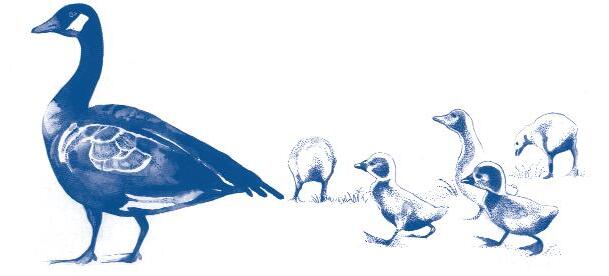
Plague oflocusts Sleuth ofbears
Bevy ofswansString ofponies
The cheetah is reported to be the fastest animal (200 mph) while the Peregrine falcon had been clocked at 70 mph.
The average length ofpregnancy in the elephant is 624 days.In the horse the average is 336 days and in the cow it is 280 days.The average for cats and dogs in 63 days.These number may be lower or higher in individual animals.
On January 1,2003,two breeds become eligible to compete for championship points at AKC dog shows – the toy fox terrier in the toy group and the German pinscher in the working group.
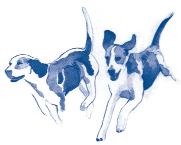

The toy fox terrier is an American breed and is sometimes referred to as the Amertoy.It was developed by breeding small smooth fox terriers with other toy breeds,including Chihuahuas and Maltese.The erect,pointed ears are a distinguishing feature.It must be under 11.5 inches and over 8.5 inches in height.There are a number ofdisqualifications in the breed standard.More than 50% ofthe body must be white,but the head may not be more than 50% white.The head and body spots must be the same color.Judges at the shows will have to study the standard carefully.
The toy fox terrier has a milder disposition than many other terrier breeds.It is alert,intelligent,friendly and good with children.
The German pinscher is a medium size, short coated dog,smaller than,but similar to, the Doberman.Except for the short coat,it resembles the standard schnauzer which originally was called the wire haired pinscher. German pinschers are known for their vermin
hunting skills and are considered excellent watchdogs and companions.Dogs are strongwilled and can be stubborn and manipulative. Consistent,gentle discipline is a must.
It is always a good idea to investigate a breed before buying a puppy.Try to see adults with the breeder or at dog shows.Don’t make your decision based on what you might see on television.A wealth ofinformation about breeds, breed clubs,dog shows,etc.is available on AKC’s website – www.akc.org.
University ofPennsylvania School ofVeterinary Medicine
Editor
Helma Weeks
Photographers
Jon Adams
Addison Geary
Doug Thayer
Writers
Stephen Bradt
Dr.Josephine Deubler
Joan Capuzzi Giresi,V.M.D.
Patrick A.Mahaney,V.M.D.
Alumni Relations Liaison
Joshua E.Liss
New Bolton Center Liaison
Jeanie Robinson-Pownall
We’d like to hear your praise,criticisms,or comments.Please address your correspondence to:
Helma Weeks
University ofPennsylvania
School ofVeterinary Medicine
3800 Spruce Street Philadelphia,PA 19104-6010 (215) 898-1475
hweeks@vet.upenn.edu
None ofthese articles are to be reproduced in any form without the permission ofthe editor of Bellwether
©Copyright 2002 by the Trustees ofthe University ofPennsylvania.
The University ofPennsylvania values diversity and seeks talented students,faculty and stafffrom diverse backgrounds.The University ofPennsylvania does not discriminate on the basis ofrace,sex,sexual orientation,religion, color,national or ethnic origin,age,disability,or status as a Vietnam Era Veteran or disabled veteran in the administration ofeducational policies,programs or activities;admissions policies;scholarship and loan awards;athletic,or other University administered programs or employment. Questions or complaints regarding this policy should be directed to:Executive Director,Office ofAffirmative Action and Equal Opportunity Programs,3600 Chestnut Street, Sansom Place East,Suite 228,Philadelphia,PA 19104-6106 or (215) 898-6993 (Voice) or (215) 898-7803 (TDD).
The first weekend in May is always a busy one for Dr.Josephine Deubler,V’38, as it is the “Bucks County weekend”– one ofthe largest outdoor dog shows,the Bucks County Kennel Club show,is held the first Saturday in May.It has been chaired,organized and run by Dr. Deubler for 34 years.
On May 3rd,the eve ofthe show,more than 100 friends gathered at the Hotel Du Village in New Hope for a celebration of Josephine’s 85th birthday – her birthday is on May 4.Highlight ofthe evening was the unveiling ofa portrait ofDr.Deubler,commissioned by Walter F.Goodman,member of the School’s Board ofOverseers,and painted by Mary White.The portrait will be hung in the Dr.Josephine Deubler Bridge area that will connect the current veterinary school complex to the new Teaching and Research Building.
Dean Alan M.Kelly announced that he hopes to raise $1 million for the Deubler Bridge.The space,high above the street,will be a dramatic backdrop,not only to the painting ofthe School’s first female graduate,but also for plaques honoring achievements of many ofour other alumnae.
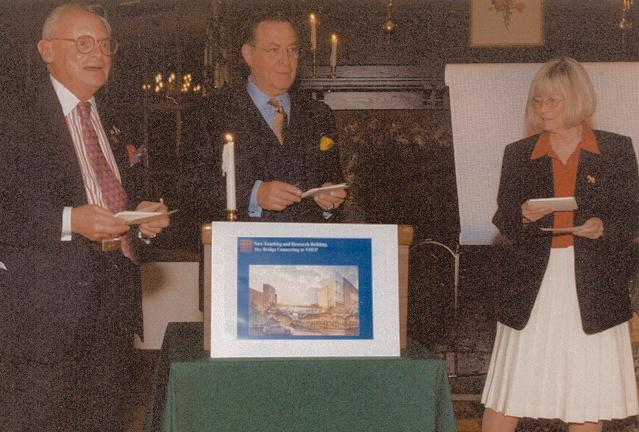

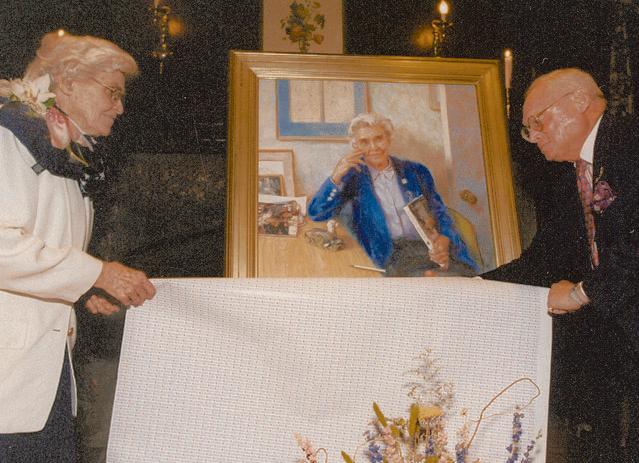
Another highlight ofthe evening was the reading ofadjectives and phrases describing Josephine.“Amazing,”“Unique,”“Irreplaceable,”“Sharp,”“Special,”“Like the Energizer Bunny,”were among the many words and phrases that the audience submitted.
The next day,most ofthe party goers attended the BCKC show which had splendid weather – fitting for a birthday and a great dog show.
Mrs.Jeannine Earnshaw Adams
Linda E.Aiken,V’78
Mrs.Rosalie M.Anderson
Animal Hospital
Animal Rescue League ofPhiladelphia
Dr.Narayan G.Avadhani
Mr.Richard L.Bauer
Mr.and Mrs.Erik Bergishagen
Bibliography ofthe Dog
Bilmar Veterinary Services
Ms.Eugenia B.Bishop
Ms.Damara Bolte
Mrs.Bette Kuhs Brown
J. William Brown,V’43
Mrs.Ellen MacNeille Charles
Ms.Anne Rogers Clark
Mrs.Gloria C.Cochrane
Mrs.Dorothy Dalton
Deewal Registered Josephine Deubler,V’38
Dogs in Review
Mr.Samuel E.Ewing III
Mr.Wayne E.Ferguson
Mrs.Ellen Frenkel
Mr.Walter F.Goodman
Mrs.Gaynor E.Green
Donald W.Gulick,V’75
Mr.and Mrs.Wayne B.Hallard
Mrs.Ann D.Hearn
Ms.Wilmarie F.Hopkins
Mrs.Gretchen S.Jackson
Mr.and Mrs.Albert E.Johnston
Mr.Gilbert S.Kahn
Mr.Kenneth Kauffman
Mr.and Mrs.Robert L.Kelly
Ms.Vernelle Kendrick
Raymond E.Larson,V’38
Ms.Jean S.Madsen
Dr.and Mrs.Robert R.Marshak
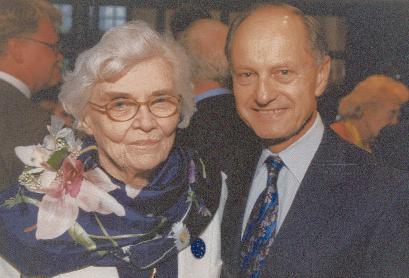
Mrs.Edna K.H.Martin
Ms.Karolynne McAteer
Mrs.Gwynne G.McDevitt
Mr.and Mrs.Barrie G.McMath
Mr.and Mrs.R.H.Menaker
Mrs.Barbara Miller
Mr.Mark Miller
Montgomery County Kennel Club
Mr.Desmond J.Murphy
Ms.Charlotte P.Patterson
Dr.Samuel M.Peacock
Pine Brook Farm,Inc.
Mrs.Margaret Young Renihan
Reveille
Mr.James G.Reynolds
Jack K.Robbins,V’45
Mrs.Isabel Prizer Robson
Irwin Rothman,V’41
Mrs.Cecelia Ruggles
H.James Schroll,V’74
Jane Sparacino Schroll,V’74
Mrs.Patricia Scully
Mr.and Mrs.John R.Seelbach
Mr.and Mrs.Robert D.Sharp
Mr.John C.C.Shaw
Martin & Toni SosnoffFoundation
Mr.and Mrs.Martin T.Sosnoff
Ms.Toinette Tucker
Mr.and Mrs.Gonzalo F.Valdes-Fauli
Mrs.Cynthia G.Vogels
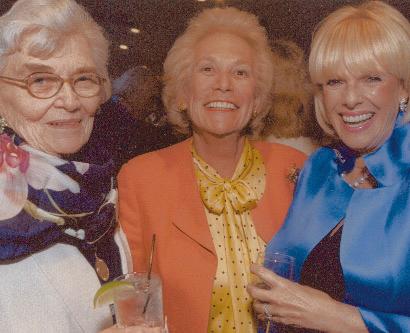
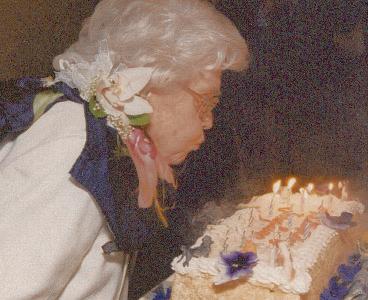
Mr.Chris Walkowicz
Ms.Sharol C.Way
What A Good Dog,Inc.
October 2002
12
Parents and Partners Day 2002
Philadelphia and New Bolton Center campuses
Parents and partners ofthe School ofVeterinary Medicine's first-year students receive an overview of veterinary education at Penn.For information, contact Amy M.Bogdanoffat (215) 898-4234 or via e-mail at <bogdanof@vet.upenn.edu>.
15
7:30 p.m.
Friends of New Bolton Center Lecture by David O'Connor,2000 Olympic Gold Champion in Eventing
Woerner Amphitheater,George D.Widener Hospital for Large Animals
New Bolton Center
For information,contact Patricia Hall at (610) 4445800 x2500 or via e-mail at <phall@vet.upenn.edu>.
November 2002
2 2002 Rush Shippen Huidekoper Society Dinner Independence Seaport Museum
Philadelphia,PA
To recognize the School ofVeterinary Medicine's most generous donors and friends.For information, contact Joshua E.Liss at (215) 898-1481 or via email at <lissj@vet.upenn.edu>.
19 7:30 p.m.
Friends of New Bolton Center Lecture by John C.Kimmel,V'80,Horse Trainer
Woerner Amphitheater,George D.Widener Hospital for Large Animals
New Bolton Center
For information,contact Patricia Hall at (610) 4445800 x2500 or via e-mail at <phall@vet.upenn.edu>.
3800 Spruce Street
Philadelphia, PA 19104-6008
Address Service Requested
20
2:00-4:00 p.m.
Veterinary Medical Alumni Society Executive Board Meeting Alumni Hall
New Bolton Center
5
6:00-8:00 p.m.
Alumni Reception
American Association ofEquine Practitioners
Annual Convention
Gaylord Palms Resort and Convention Center Orlando,FL
For information,contact Joshua E.Liss at (215) 898-1481 or via e-mail at lissj@vet.upenn.edu.
January 2003
11-18
Pennsylvania Farm Show 2003
Farm Show Complex
Harrisburg,PA
Visit the School ofVeterinary Medicine’s booth at the largest indoor agricultural event in America.For information,contact Jeanie Robinson-Pownall at (610) 444-5800 x2182 or via e-mail at <jeanierp@vet.upenn.edu>.
25
Annual Canine Symposium for Owners and Breeders
E.R.Marookian,V.M.D.Auditorium
Veterinary Hospital ofthe University ofPennsylvania
For information,contact Dr.Josephine Deubler at (215) 898-8862.
29-30
2003 Penn Annual Conference
Adam's Mark Hotel Philadelphia,PA
For information,visit <http://alumni.vet.upenn.edu/ pennannualconference.htm>.
29
2:00-4:00 p.m.
Veterinary Medical Alumni Society Executive Board Meeting at 2002 Penn Annual Conference
March 2003
19
2:00-4:00 p.m.
Veterinary Medical Alumni Society Executive Board Meeting Alumni Hall New Bolton Center
22
Annual Feline Symposium for Owners and Breeders
E.R.Marookian,V.M.D.Auditorium
Veterinary Hospital ofthe University ofPennsylvania
For information,contact Dr.Josephine Deubler at (215) 898-8862.
May 2003
14
2:00-4:00 p.m.
Veterinary Medical Alumni Society Executive Board Meeting
Veterinary Hospital ofthe University ofPennsylvania
16-18
Alumni Weekend 2003/Reunions for Classes ending in "3" or "8"
19
School of Veterinary Medicine Class of 2003 Commencement